Fine Art | Interview | “The Fine Art of Manipulating Record Companies and Making Lots of Money”
In the late 1970s there was a fantastic art punk / new wave band called Fine Art coming from the Minneapolis, Minnesota area. In 1978 they released a self-titled album in a true DIY fashion.
Here’s the complete story of the band told by its guitarist Colin Mansfield. He later became a composer, engineer, producer and mentor to young people interested in creating music using computers. He released several solo albums, ‘The Great Expedition’ being his latest. Mansfield is also one half of Sound Commandos, with British synthesist Christopher J Wray.
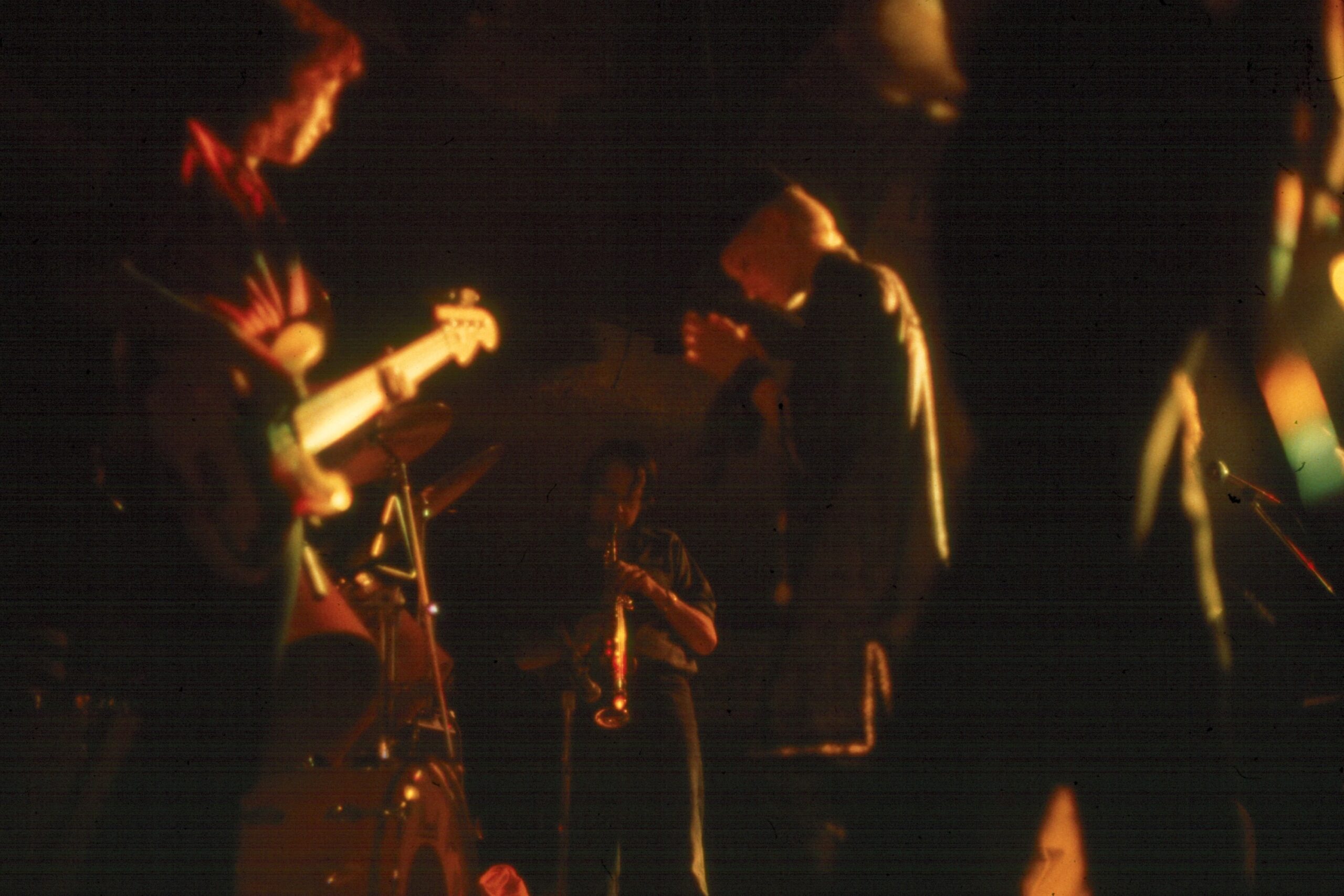
Would you like to talk a bit about your background?
Colin Mansfield: I was born and raised in London just after WW 2. I was ten years younger than my brother and he joined the Royal Army when I was young, so I was left on my own fairly often. Luckily, my brother had great taste in music and he left records by Howlin’ Wolf, Muddy Waters and so on. I had a fairly uneventful time growing up — until my father died from a heart attack in 1963, which left me with a step mother and her son (also 10 years my senior). Things got complicated from there…
Would you like to talk about how you first got interested in music?
As I mentioned, my brother left me with some cool records to play. One of my earliest musical memories is from “playing drums” with dinner knives on a biscuit tin when I was four. When I was about 5, my brother brought me my first guitar.
My best friend from primary through secondary school liked American folk and blues and we would listen to records from the library, field recordings especially. I was getting pretty good at playing songs by ear.
British music in the 50’s was not great. Most of the songs on the radio were British performers doing American hits. So we had some strange things to listen to; a skiffle version of ‘The Battle Of New Orleans,’ for instance. Rock ’n’ roll wasn’t as big after Elvis Presley was drafted, and of course, Buddy Holly died. A lot of the original music was coming from artists like Cliff Richard and the Shadows, but in the end it was very commercial.
I was 13 when I first heard ‘Love Me Do’ by The Beatles and that tells the rest of the story. Nobody knew this phrase at the time, but I was the male side of The Beatles’ “target audience.” Basically, pop music chronicled my life for a year or two, either before or after it happened. By the end of the decade I was doing psychedelic rock, influenced by bands like Country Joe and the Fish and of course The Beatles and Pink Floyd.
What kind of records and fanzines would we find in your teenage room?
I had those few records from my brother. For some reason I bought a copy of a Four Seasons song (‘Walk Like A Man’). But everything changed when The Beatles came along and showed that the UK could have its own musical identity.
The first LP I bought was ‘With The Beatles,’ and on a school trip to Italy I bought ‘Rubber Soul’. I wasn’t that aware of teen mags and I didn’t have enough money to join a fan club. So you would be far more likely to find Private Eye or a science fiction book than Melody Maker or New Music Express. One thing that was a focal point of my room was a large monochrome drawing I made of the typical hippie girl (in Art Nouveau style).
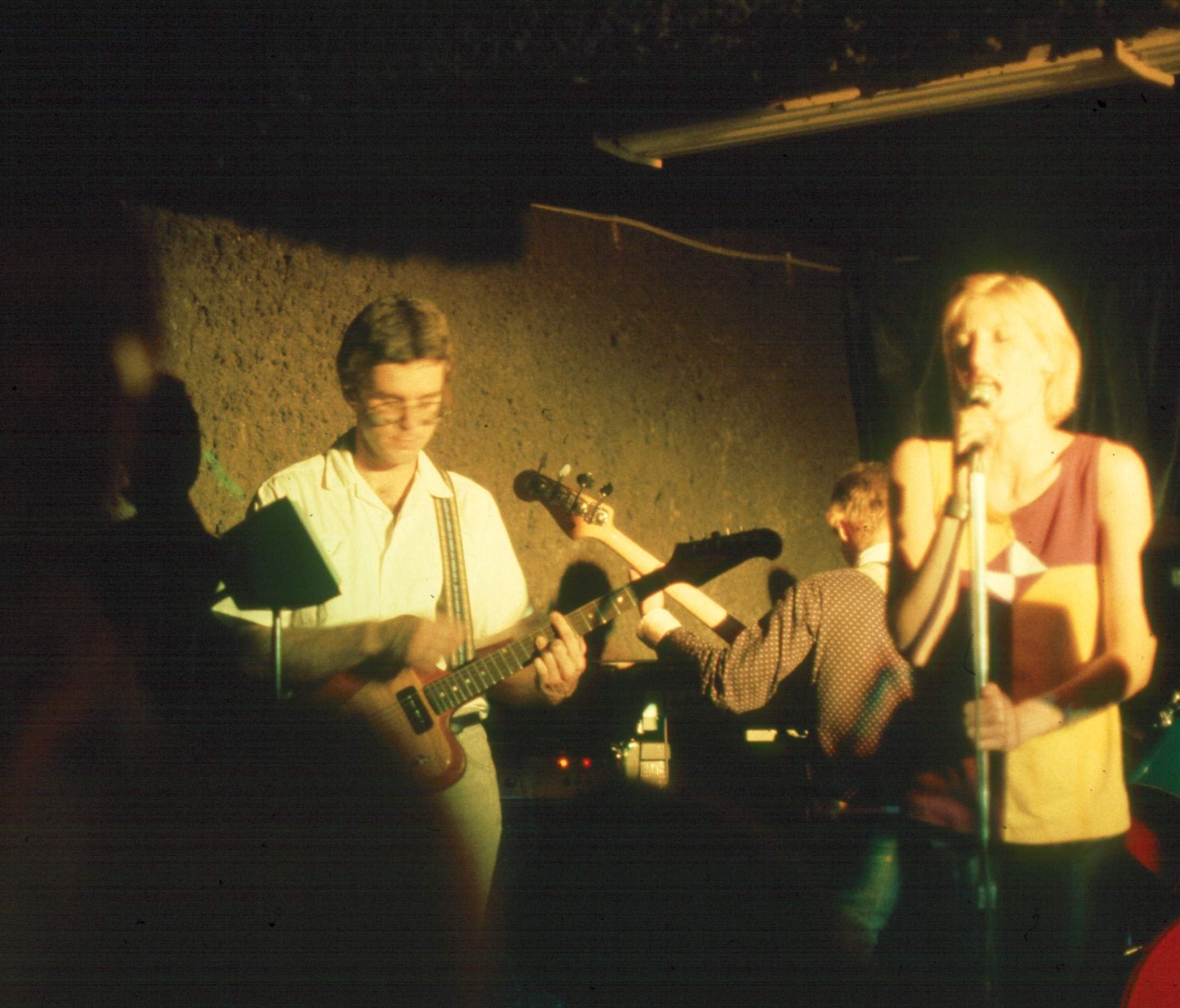
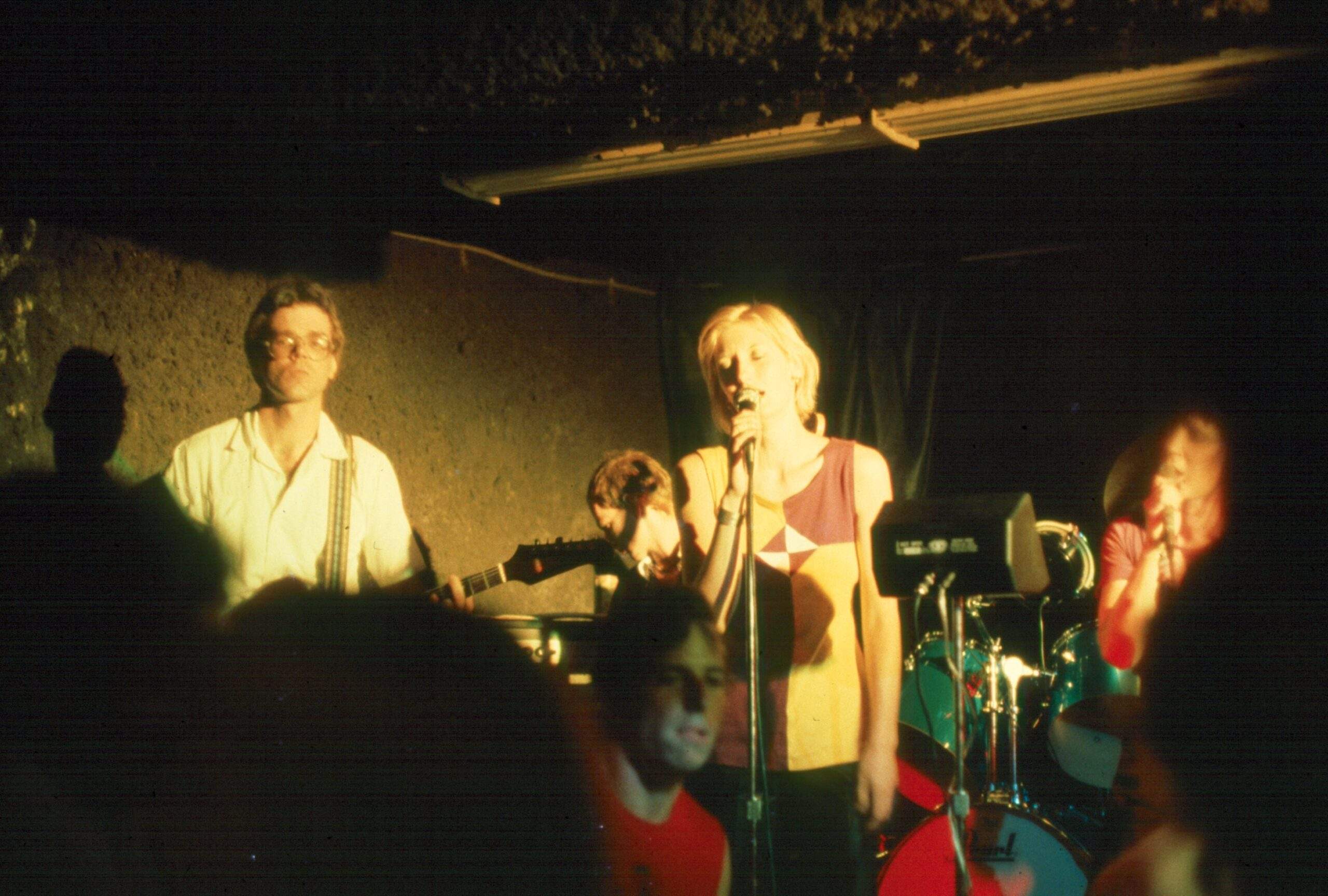
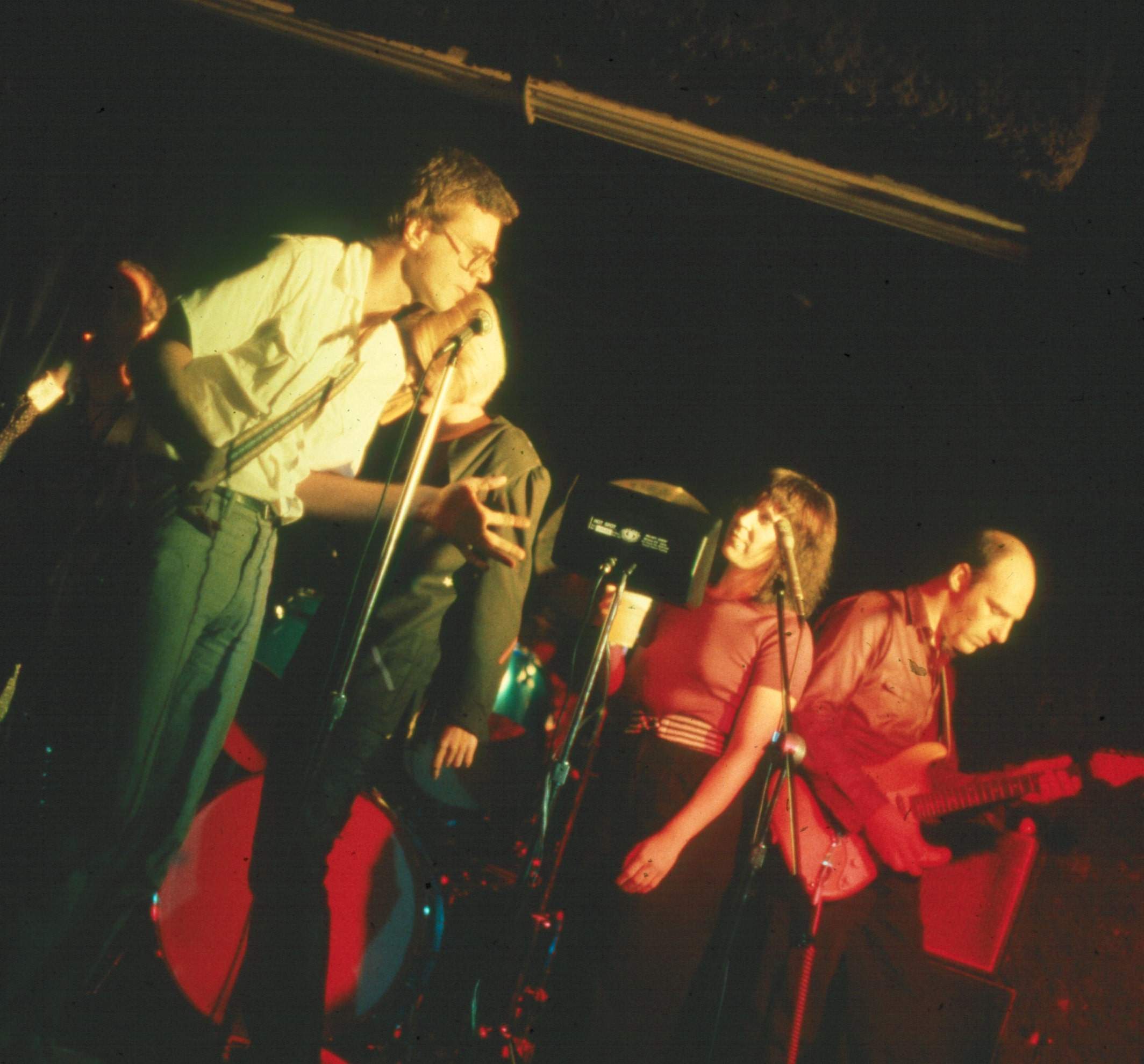
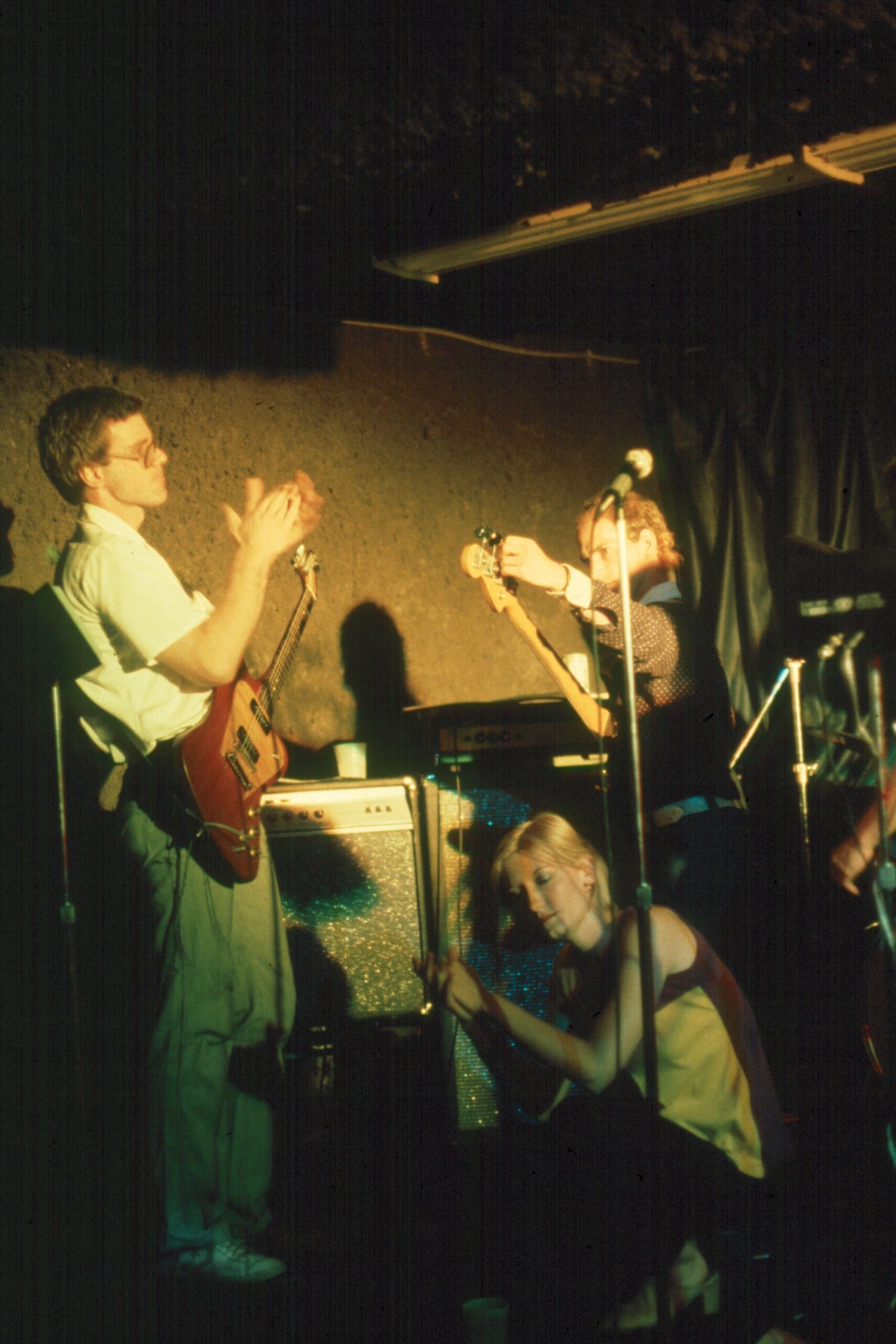
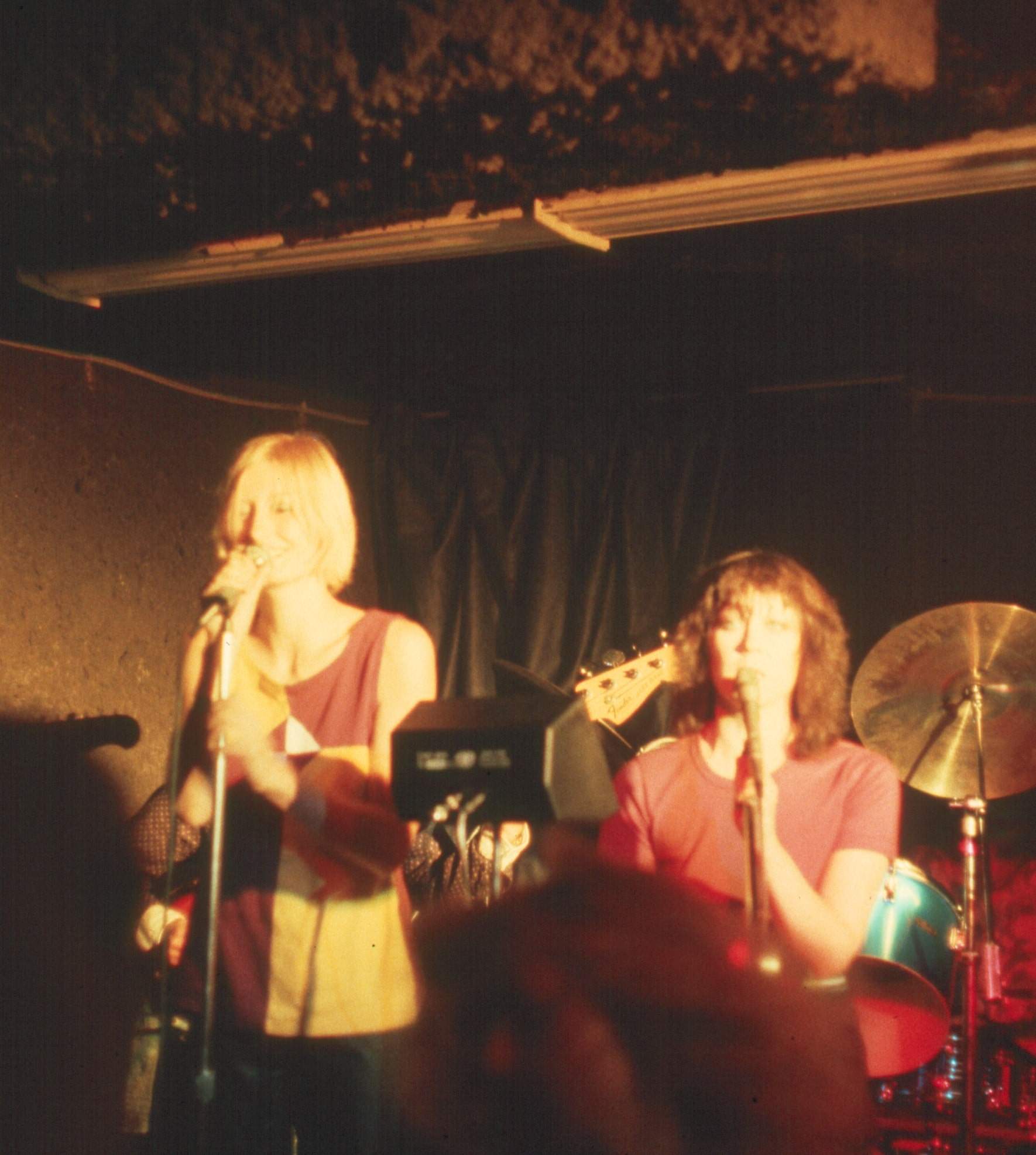
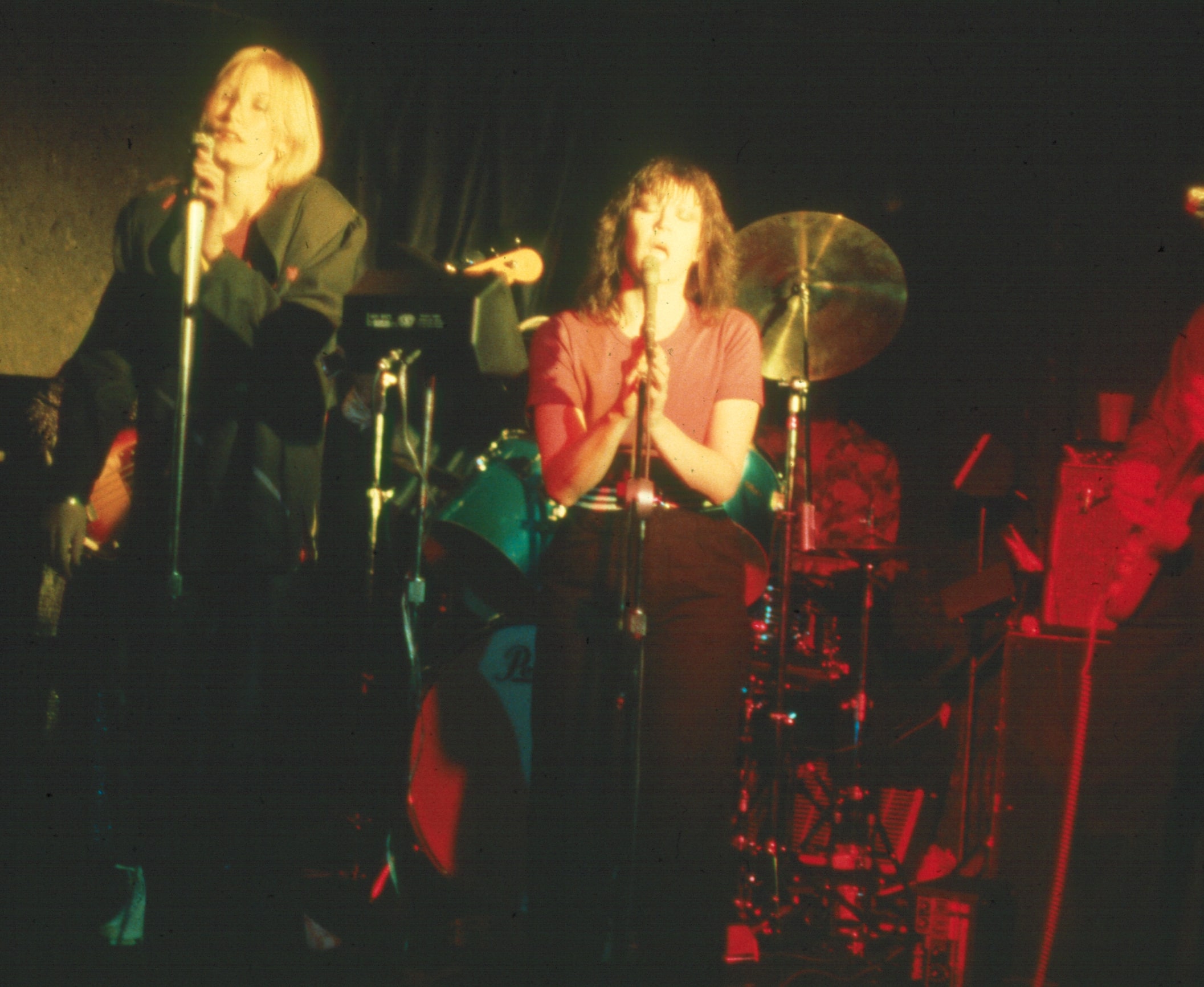
Some of the bands I was listening to before coming to America turned out to also be quite popular here in the US. The Jefferson Airplane, The Grateful Dead, Quicksilver’s ‘Happy Trails’ album, Big Brother/Janis Joplin, basically Haight/Ashbury on record. And of course singers like Leonard Cohen and Tim Buckley. Pearls Before Swine’s ‘Balaklava’ was my favourite album.
You moved to Minneapolis. What was the local underground scene in Minneapolis? What were some of the bands you saw early on?
I came to the US in 1969 for six months. A few years before, I met the young woman who was to become my girlfriend. Her father was taking a year’s sabbatical at the University of London and he had brought his family along. He had 3 girls of secondary school age, and two young boys. The girls ended up at my school and I started dating the eldest of the three. The next youngest sister ended up being a good friend too. Eventually, they returned to the US and our romance ended (of course), but in ’69 her sister came to visit me and we decided I had enough I could sell or trade to get a ticket to Minneapolis, and a couple of months later I arrived. I stayed with the family for a month or two, before getting a job playing guitar for a satirical theatre group. I met Carole who happened to be waitressing there during her summer vacation from college. We were married in December and moved back to England for a year and a half.
About the psychedelic stuff: I listened to the BBC and the only other pop station I could reliably get, Radio Luxembourg (which was like a pirate radio station before there was such a thing). The saving grace of the BBC was late Wednesday nights in ‘67 when John Peel had his show. He would play all kinds of things that would otherwise never be heard, from John Fahey to the Fugs to the young David Jones. Anyway, I basically followed the British bands that went to the US and brought back what they heard. Including The Beatles and the Stones among others. I loved each new song and each new album as they came along. I was a straight kid — I had no access to drugs, but I loved what they did to the music!
I searched for some more rare stuff, but I only found one thing I felt I could share without a lot of cleaning up the audio, and maybe not then. I did find the one song that was salvageable from a performance by our band, Grey Mouse in 1972. It’s gonna need a lot of work… I was reminded though that that’s where I first played with Monty Edwards (from our first lp) and his friend Sly.
Minnesota had a rich history in pop music. By the time I came here in 1969 there were bands like Gypsy, The Litter, and Crow. (I went back to London with my new wife Carole in 1970 and returned in May of 1971.) Bands I remember were Skogie & the Flaming Pachucos, Chameleon (with Yanni, if I remember right). By the time Fine Art was forming, bands like The Suburbs and Flamingo (or Flamin’ Ohs) were playing regularly. NNB was cool. Starting in 1977, Jay’s Longhorn bar was the place to see touring punk and new wave bands.
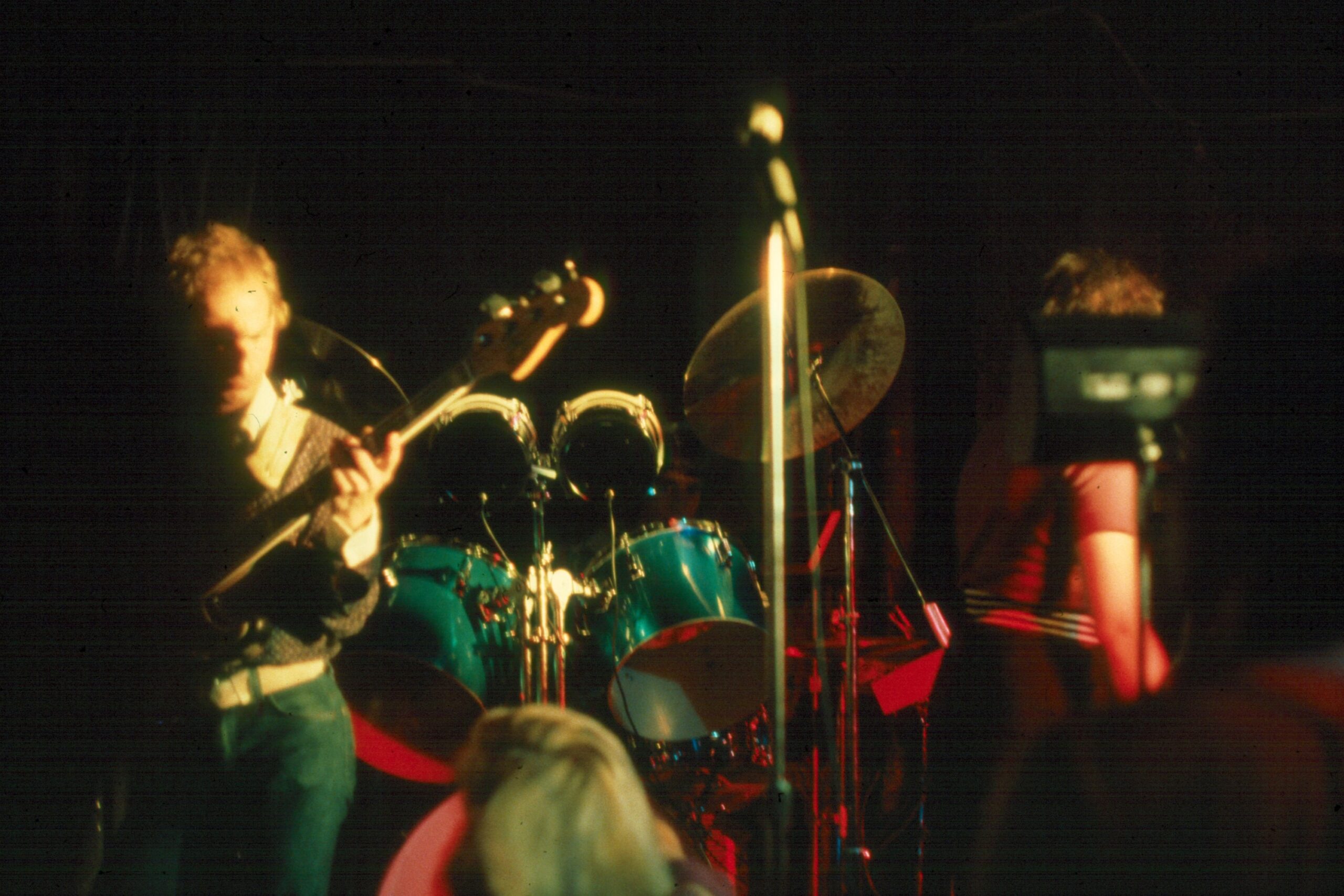
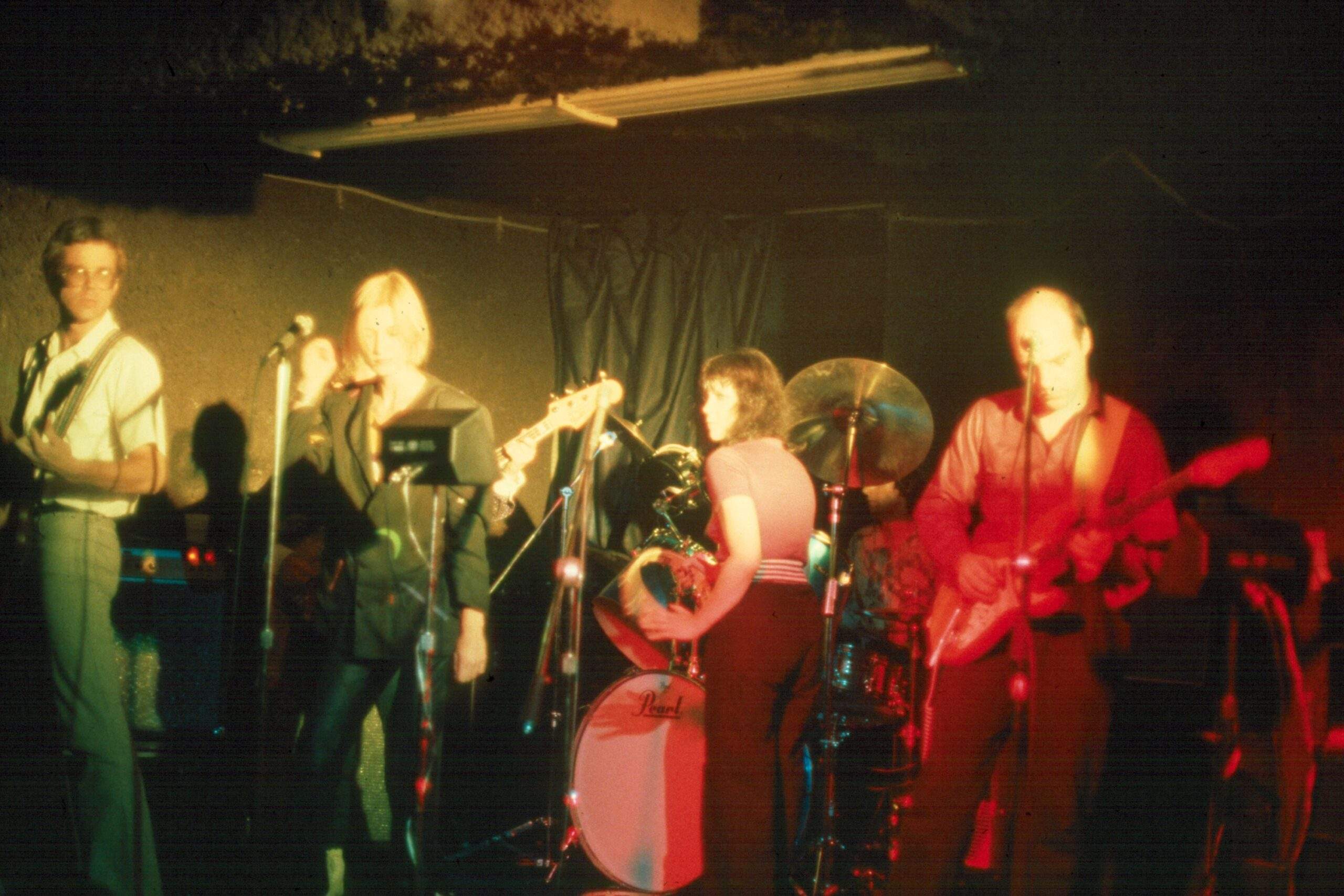
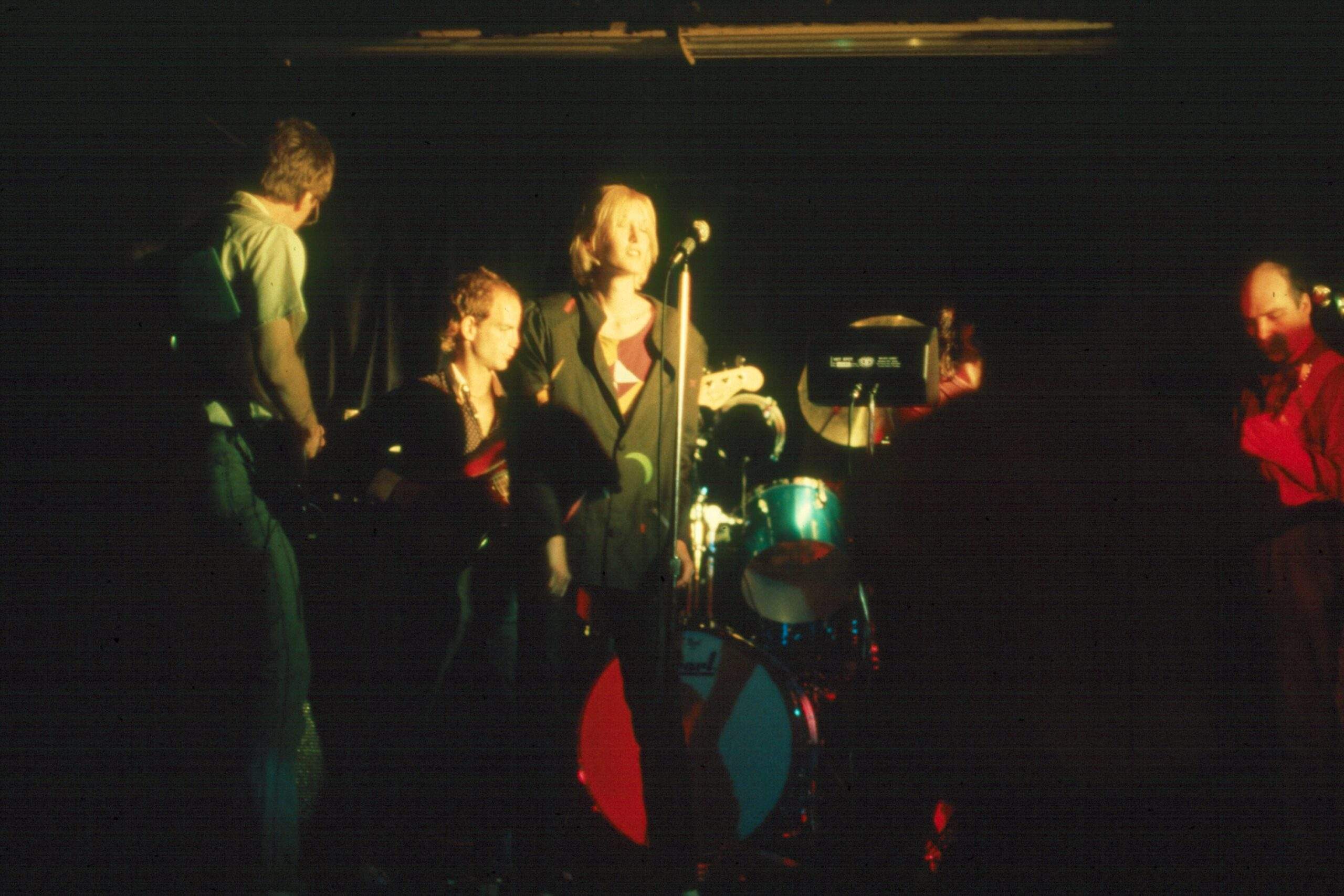
Were you or any other members of Fine Art in any bands before forming?
My wife Carole and I formed a psychedelic tinged (and sometimes fueled) folk rock band, Broken Wings in 1970 in a small town outside London. It was 2 guitars, bass and drums. Carole sang. In 1972 we started a similar band in Minneapolis, except the second guitar doubled on keyboards and we had a second singer, Wendy Sotebeer. We called it City Mouse and one of our gigs was recorded. However, it was on slow, 1/4 track tape, the kind that you turn over and record on the other side, like a cassette, and I could recover only one song before it fell to powder.
Fine Art went through a lot of personnel in its time. The drummer on the LP, Monty Edwards, had been a friend since 1971 and was a professional, on-call drummer. Apart from Carole (by now Kay Maxwell) and myself, I don’t think anybody else had been in a band. By the time of our first gig Monty had left for CA and Andy Schirmer (bass) was on his way to Boston.
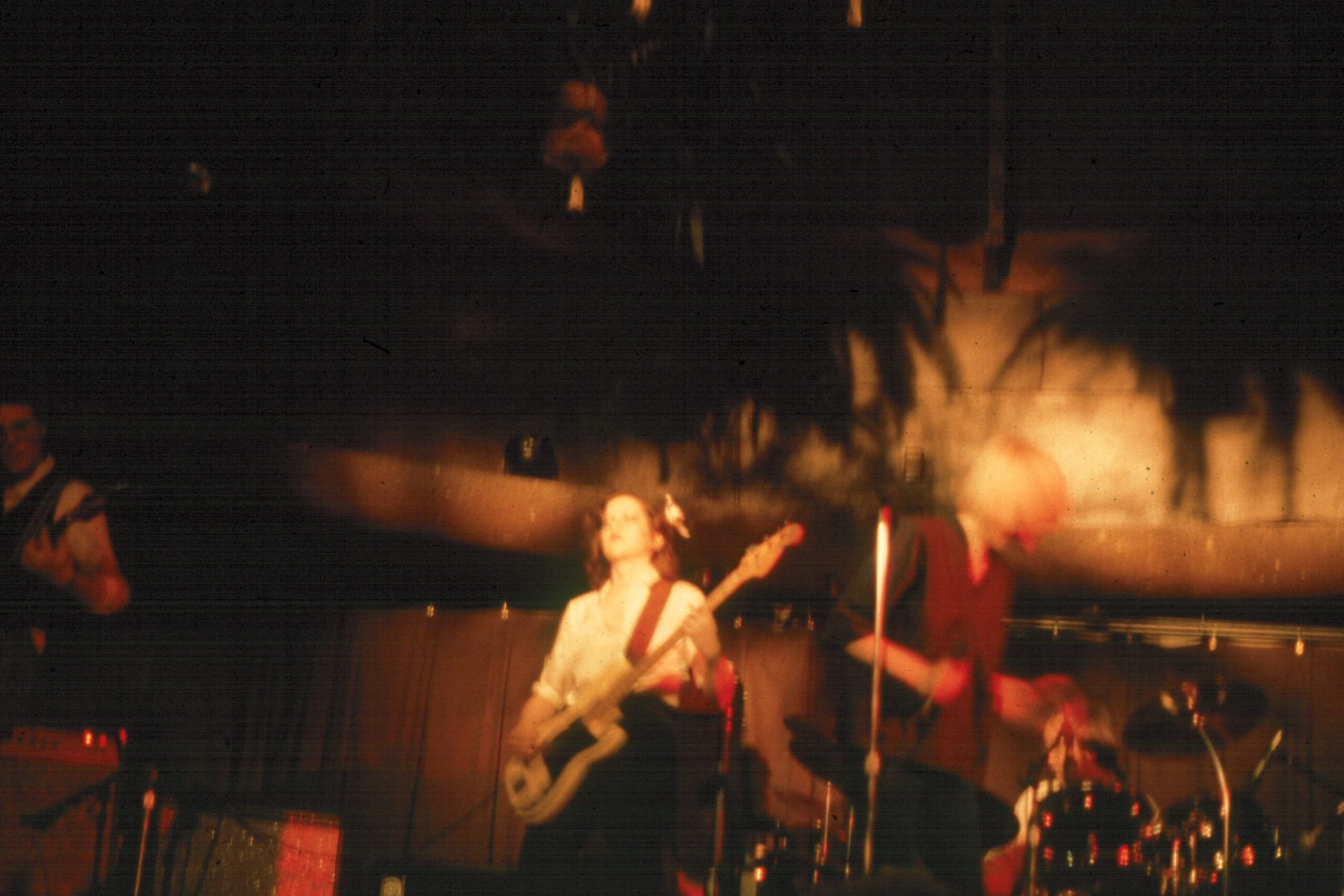
What led you to start Fine Art and can you elaborate on the formation of the band?
I’d been working in record stores for a few years and had come to the attention of Pickwick, the wholesaler that owned the stores. Ken Carlson also worked for Pickwick. We met the first time in the store I ran. Pickwick was looking for a replacement for their import records buyer who had gone to a wedding in Amsterdam and stayed a few days past his return date. So I went for the interview, got the job and on the bus back I sat next to this guy reading the paper. It was Ken who had just been fired and I was taking his job! D’oh! Ken called me several times seeing if we could jam together and eventually we got together and started writing tunes.
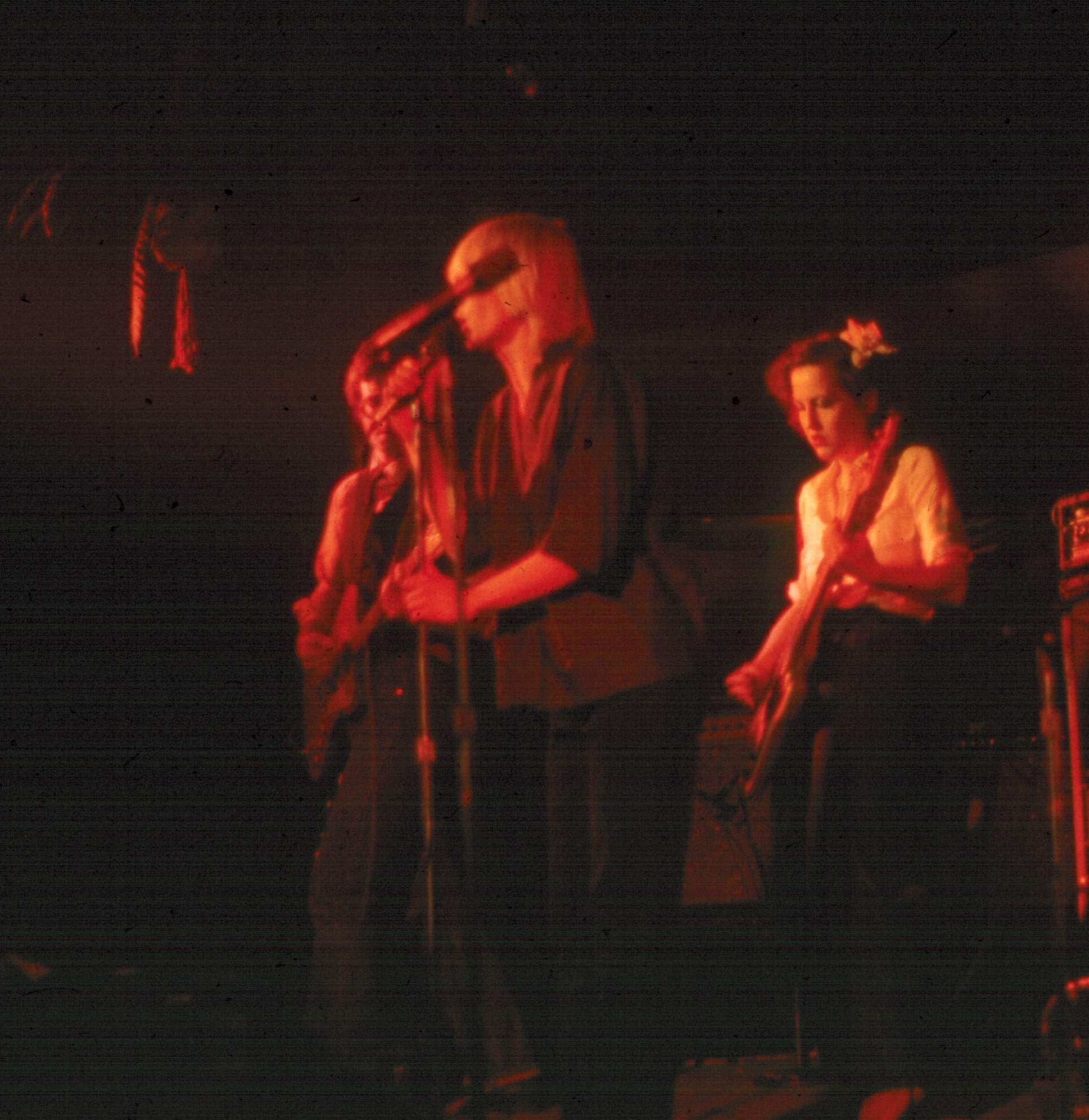
At the same time, Carole was working in a furniture store with Terri Paul and they wanted to sing together and things took off when the four of us got together.
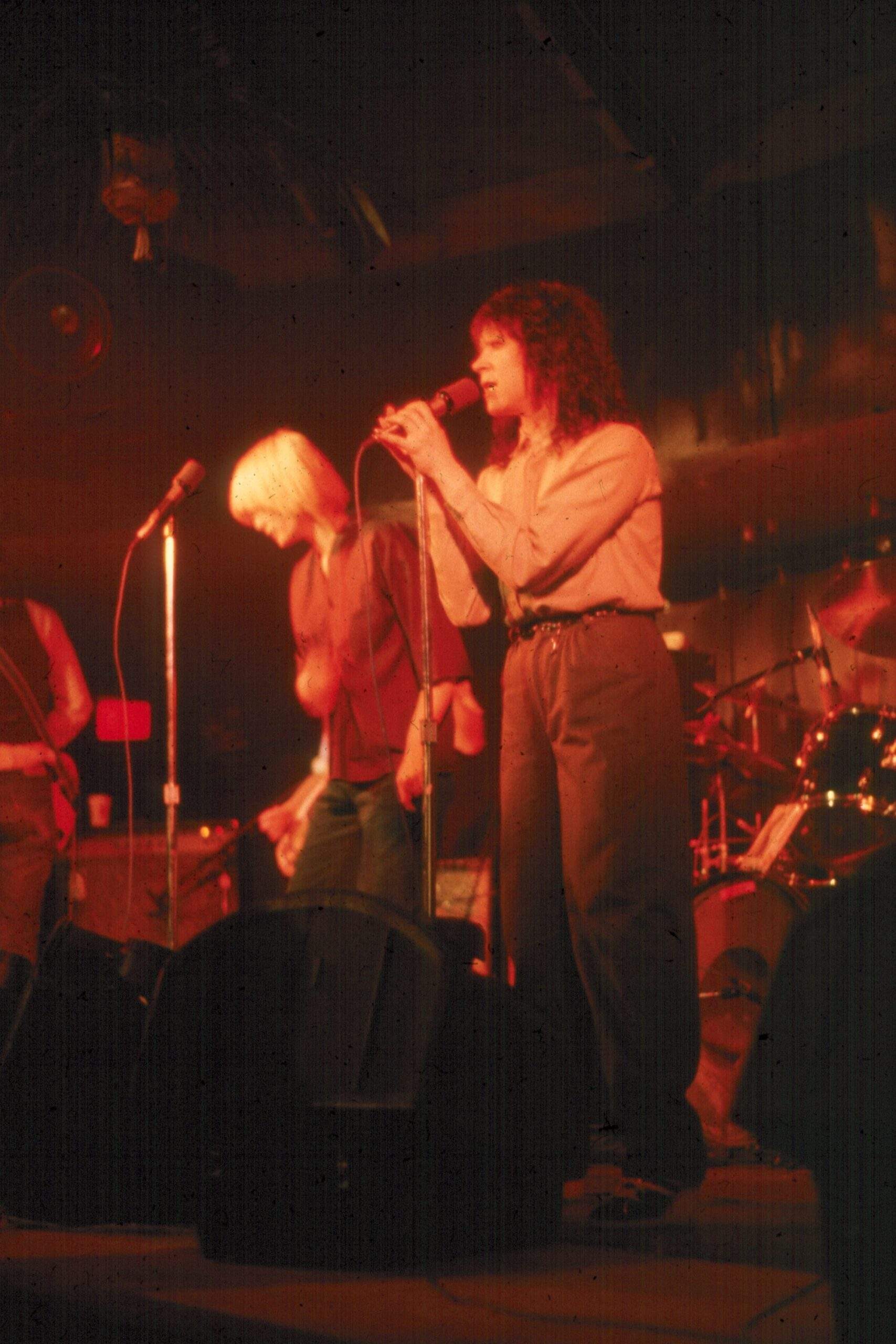
The name Fine Art was mine and it was short for “The Fine Art of Manipulating Record Companies and Making Lots of Money”. I came up with it after seeing a not at all good band opening for Elvis Costello at the Longhorn. It was inspired by the Sex Pistols doing just that, manipulating record companies and making lots of cash. (It wasn’t a great name, but who could know that the Internet would make it next to impossible to find Fine Art by name?)
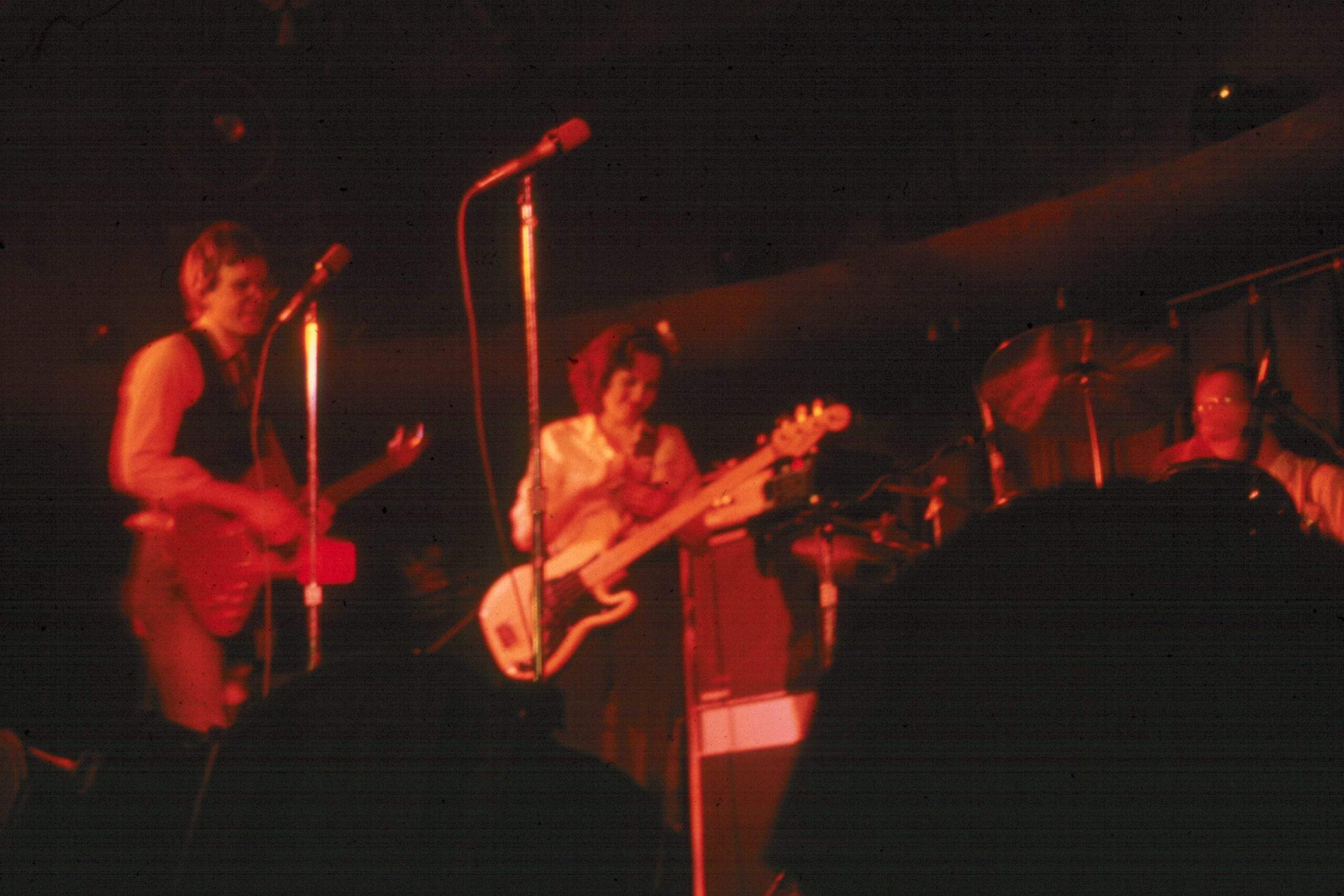
“We did everything ourselves”
What’s the story behind your 1978 self-titled album? Was it a private press? How many copies did you release?
We did everything ourselves. Recording, artwork, press and posters. Our original plan was to release the album, see how it went, then release the next and so on. We weren’t going to play live, which is why the runoff track has “Fine Art should be heard and not seen” inscribed into the disc. So the album came out and some time later we played our first gig which was a benefit for a small public radio station, KFAI. Soon after that we started getting calls from clubs wanting us to play.
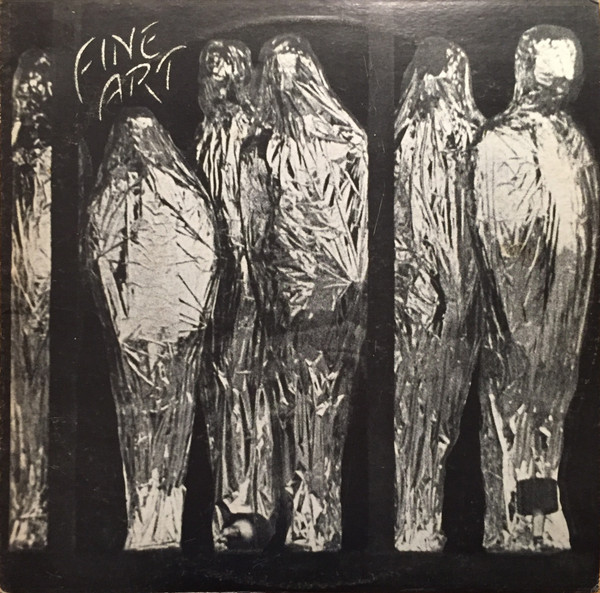
Our first pressing was 1,000 copies, with another 2,000 soon after.
After it came out, we were approached by a country record company Just Good Records threatened a cease and desist because of the similarity of the name with Good Records. We only heard from them once. Maybe they heard our album and decided nobody would ever think we were a country band…
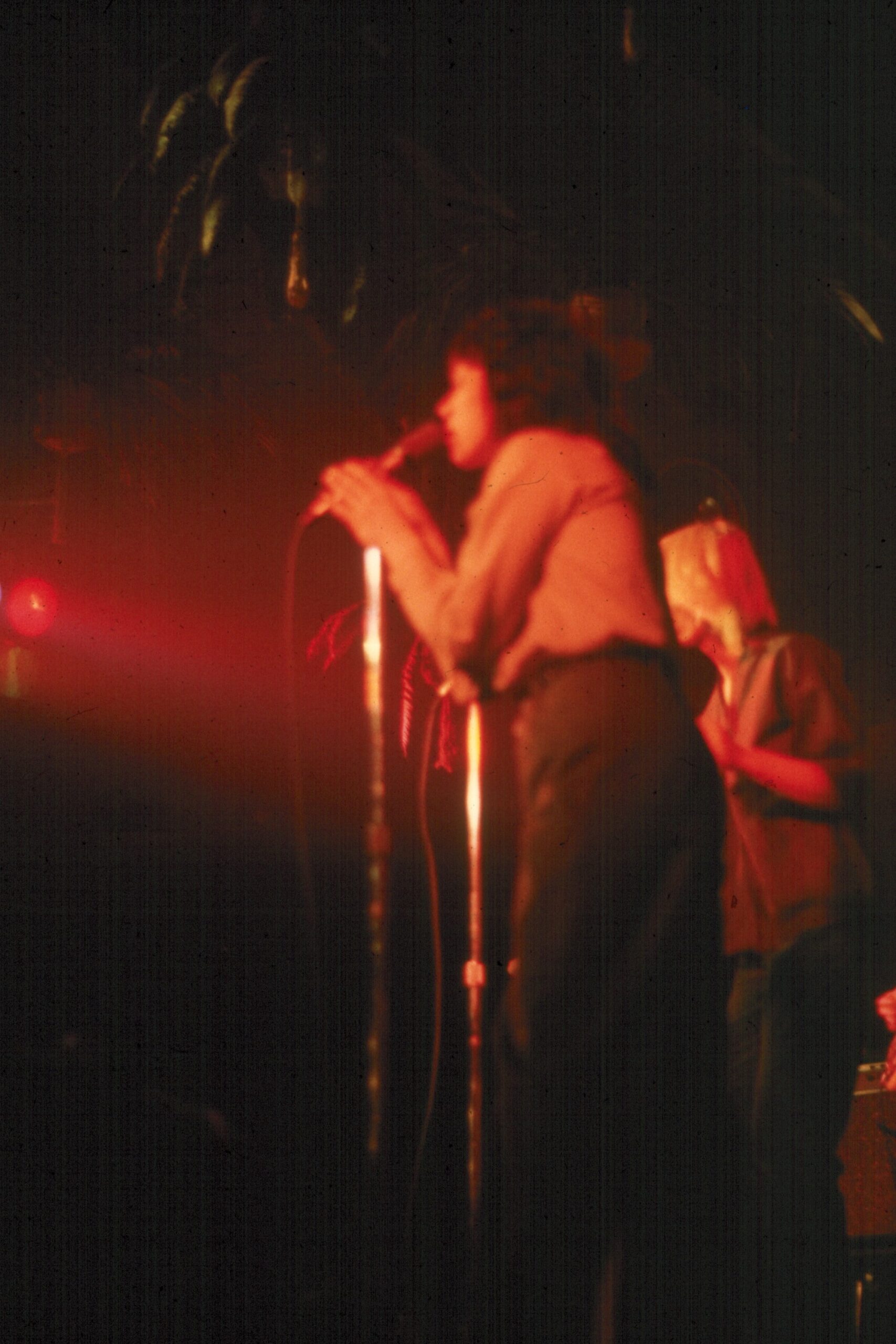
Where was the album recorded?
It was recorded in an eight track studio, imaginatively named “The Studio,” in downtown Saint Paul.
Carole had taken an audio engineering course from the guy that became the album’s engineer. I had a little studio engineering experience and when the studio was available after hours we could get in cheaply.
Tell us about the instruments, effects and audio gear you used in the studio?
Two guitars, bass, drums, and keyboards on a couple of songs. Ken Carlson and I played guitars and I played bass on Andy Schirmer’s song, ‘Rapist’. I also played acoustic on ‘Freezing Down’ and I played one of the leads.
Ken Carlson played a 1959 Gibson through an Ampeg amp and an MXR Overdrive, I think.
I played my 1959 Fender Strat through a Boss DS1 into an original Cry Baby wah. And then to a fender Deluxe Reverb amp.
Andy Schirmer had a Fender Bass, a Les Paul guitar and a Rhodes electric piano.
Monty Edwards played a blond (I want to say) Slingerland kit from the ’60s.
The vocals were captured with Neumann U47s; my vocals were recorded with an EV RE 20.
What about the cover artwork?
The photos were taken by Terri Paul’s then husband, John Aitken. The front was a store window in Canada and the back was the marquee of the Fine Arts theatre, Lake Street, Minneapolis. Carole did the design and layout, as with ‘Scan’.
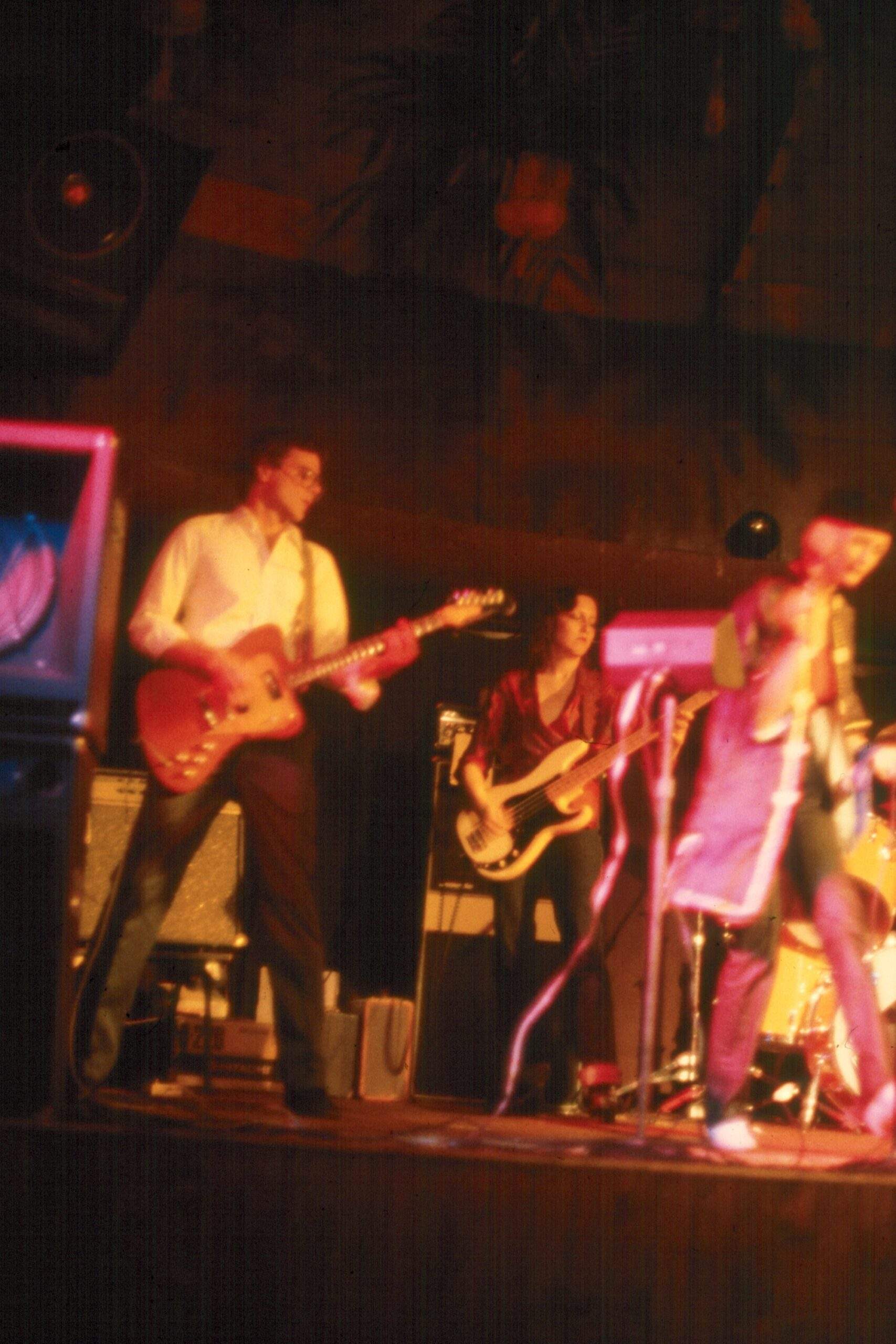
What can you tell us about ‘Scan’ 12″?
We recorded ‘Scan’ with Dave Wright (the engineer from the album) and Bob Cain. Bob was more involved with the recording — Dave was often called away by his work at Cray Computing. Their studios were always called Ambient Sound, no matter where they were located. “Ambient Sound” was also their philosophy of recording; make a good sounding space, large enough for everyone to set up, and record the music and the space. ‘Scan’ was recorded in an abandoned church in South Minneapolis. We had our third bass and drums set by then (Alan Meyer and Jay Smiley). One thing common to both the LP and ‘Scan’ was they took a long time to get pressed. Those delays were tough on the band.
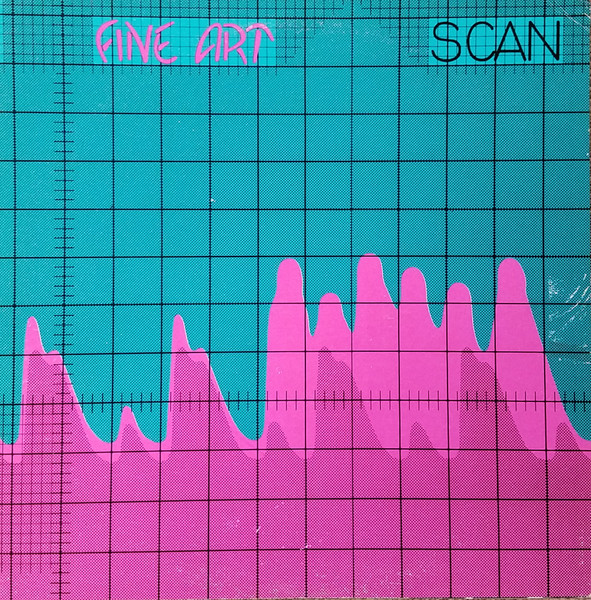
After recording, Terri Paul decided to leave the band. She was dating Chan Poling from The Suburbs and was enjoying her local superstar life. Jenni Holt then joined the band and is the woman on the inside cover of ‘Scan’. Terri is there in an insert…
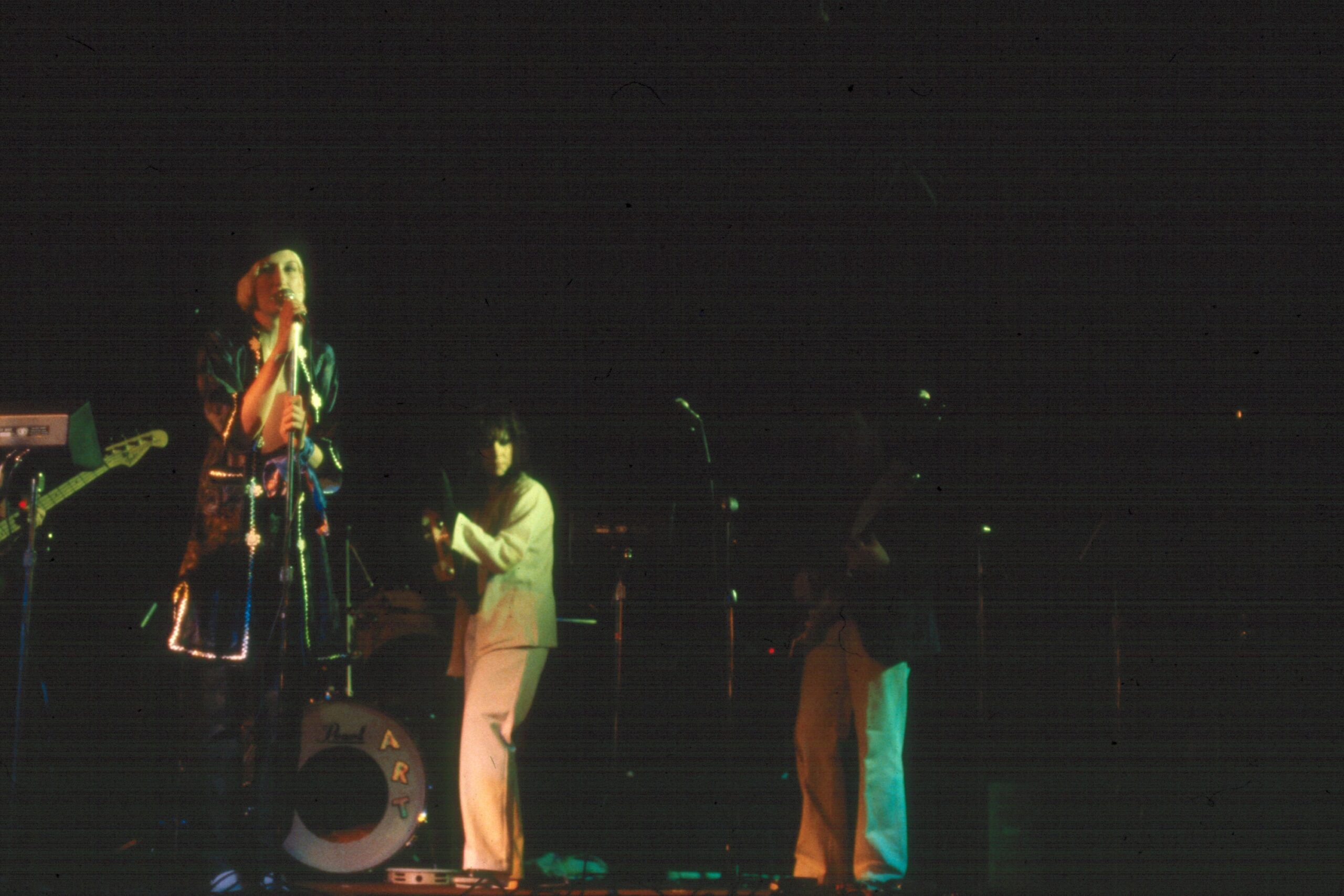
Did Fine Art play a lot of shows?
Yes, but maybe not as many as we might have liked. Touring, which we did manage to do, was difficult for the band members who relied on jobs outside the band to pay the bills. So trips either had to be short, or planned as a 10-day or two week tour. Mostly we played in and around Minneapolis and Saint Paul.
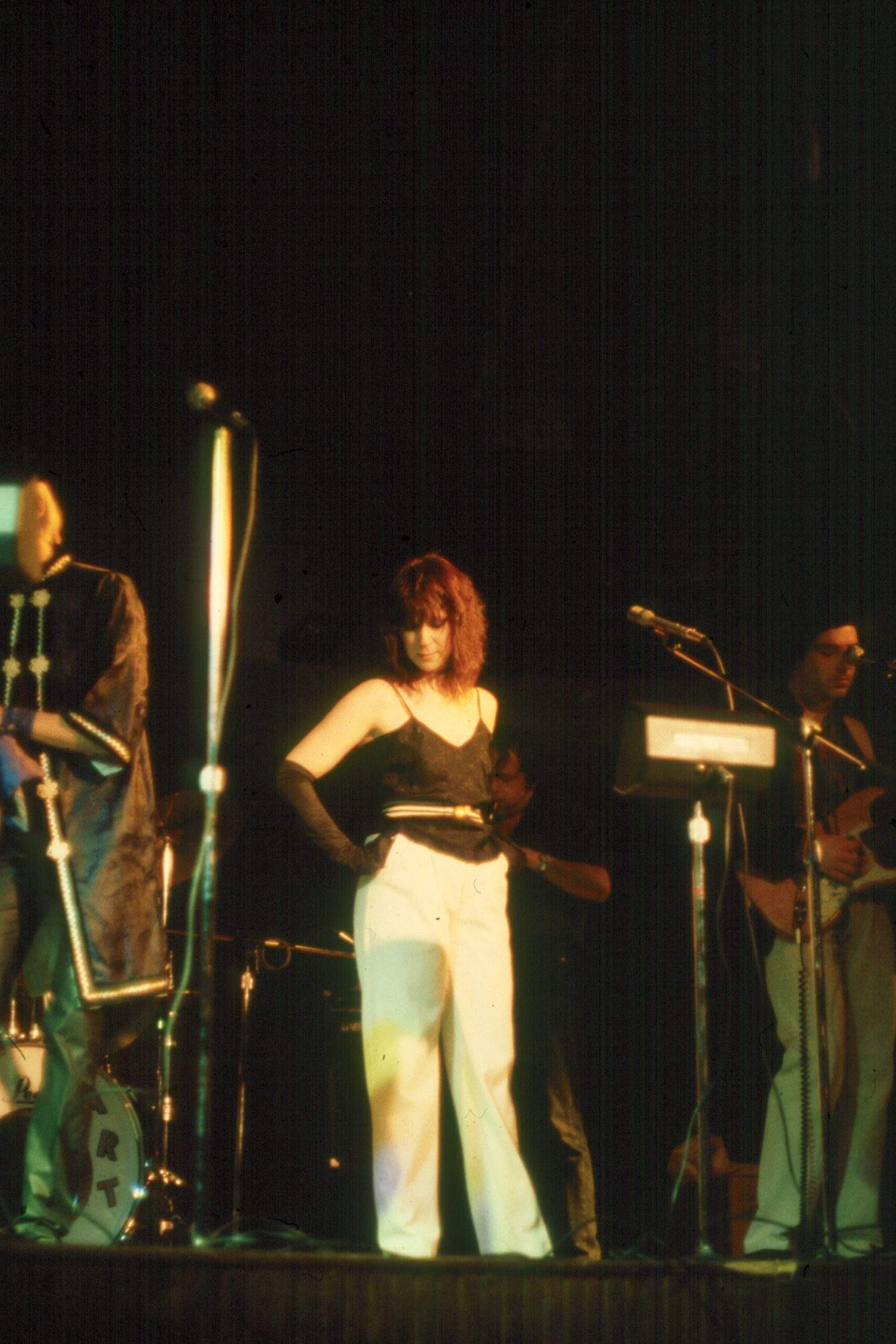
What are some bands that you shared stages with?
Nico, The Waitresses, Romantics, Romeo Void, Lene Lovich, Howard Jones, Gang of Four, and some odd bookings like DNA as well as local bands that made it nationally, like The Suburbs and Hüsker Dü. We really wanted to open for Siouxsie and the Banshees at First Ave, but it’s probably just as well we didn’t. A bunch of boys took up space in front of Siouxsie and were yelling at her like it was a 50s strip joint. They didn’t finish their set, and Siouxsie was still complaining about it the next day in a radio interview.
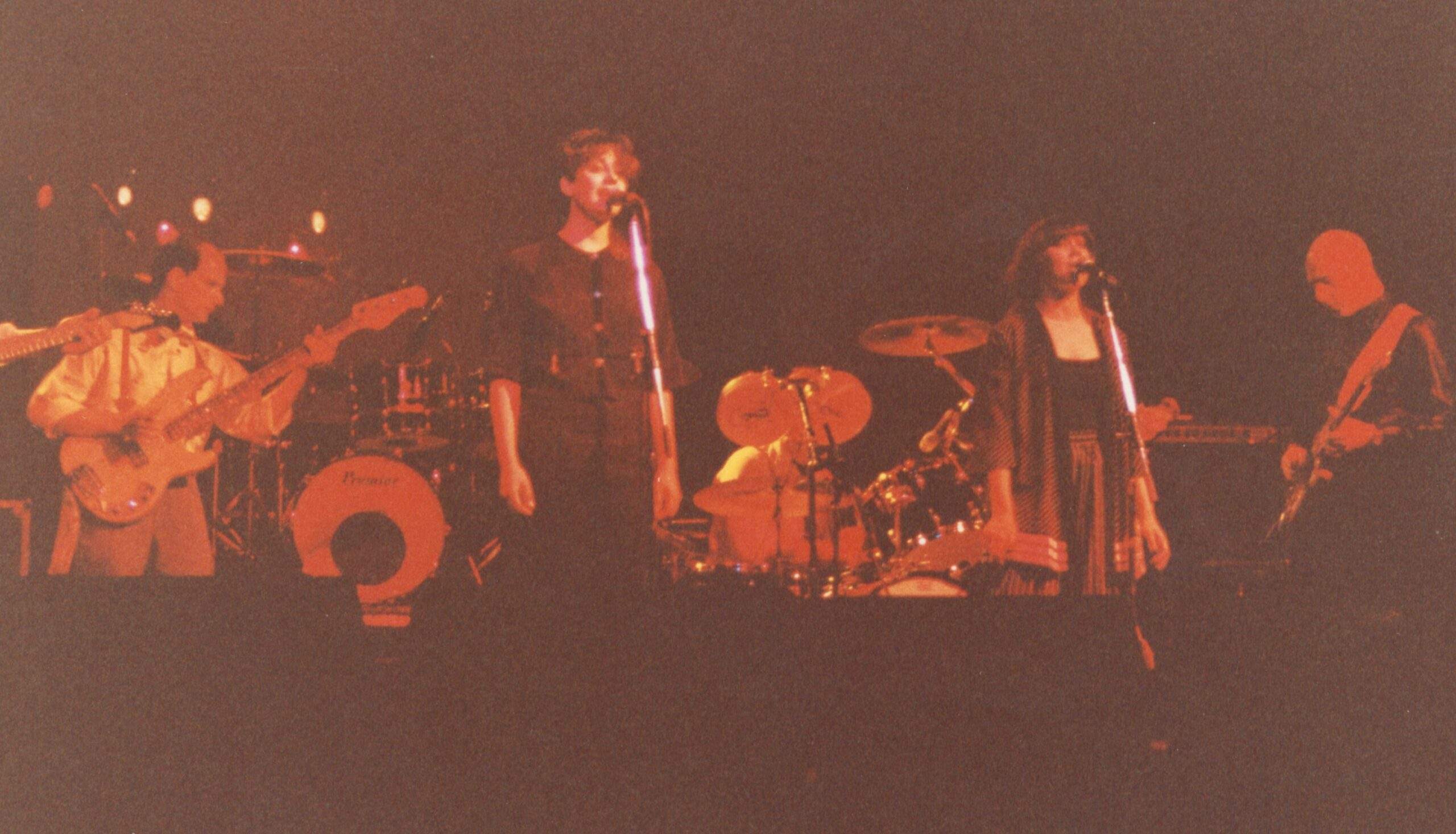
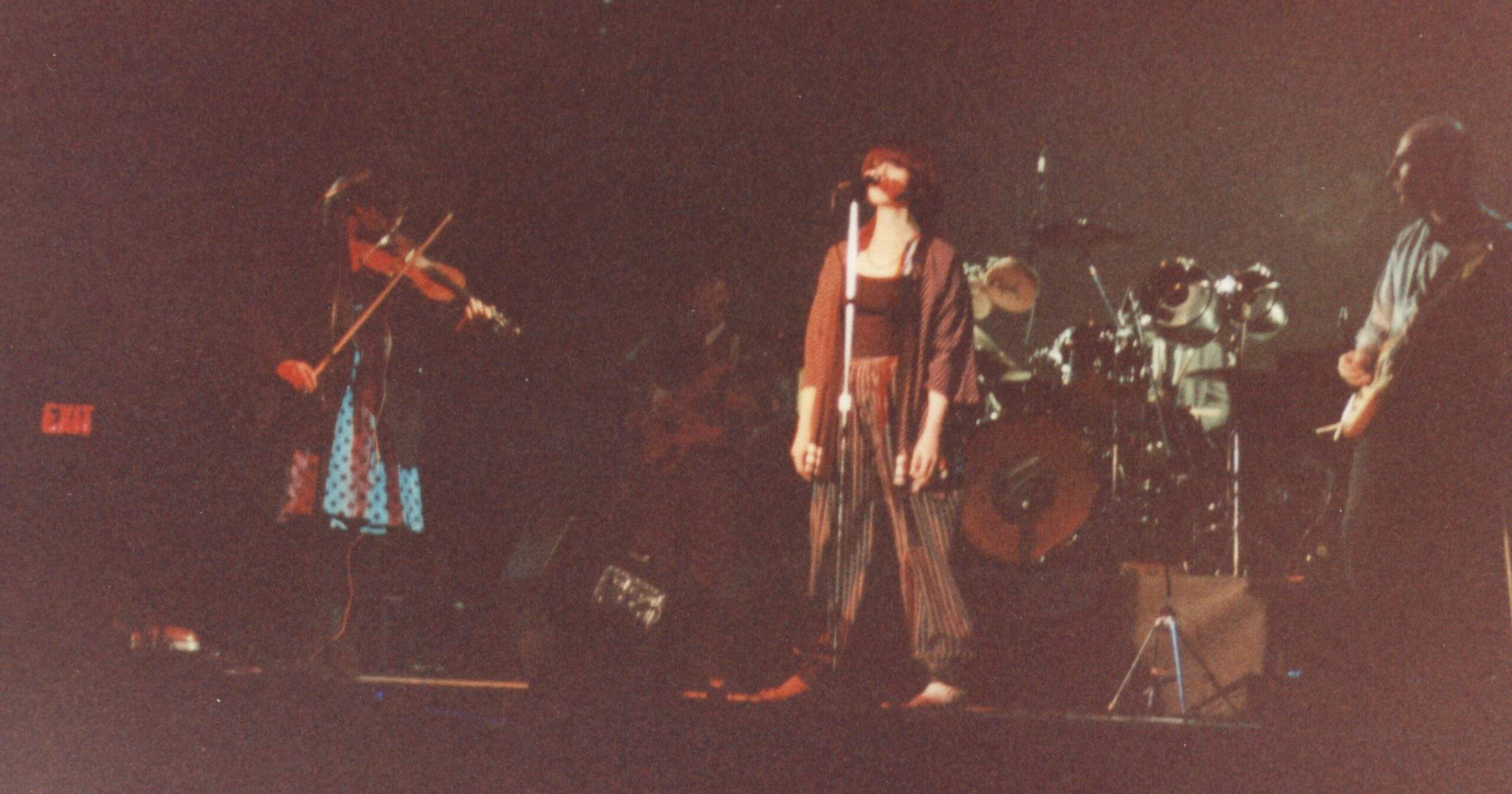
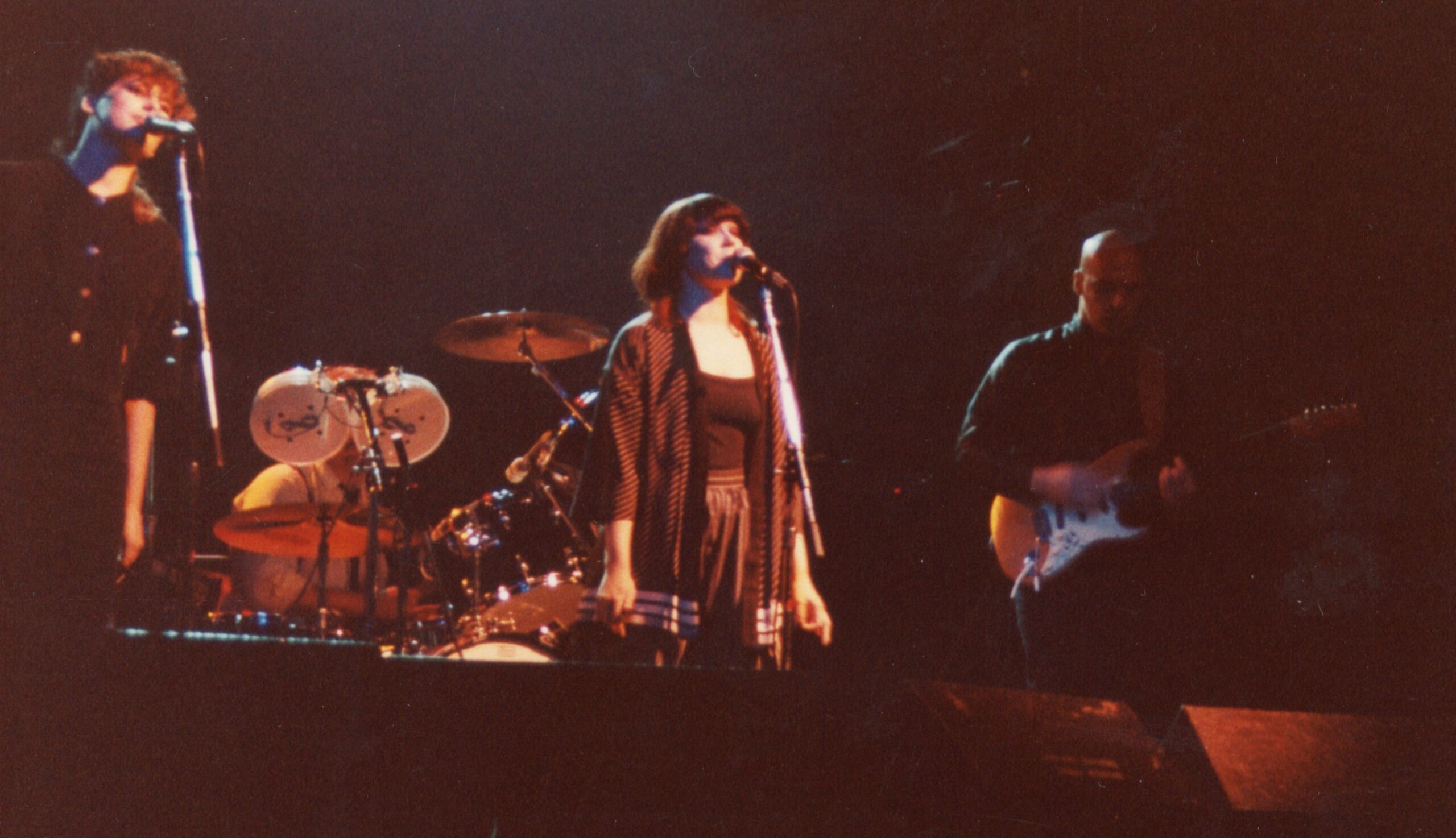
Any crazy stories you would like to share with the world?
Not to name names, but a singer from New York arrived at a club where we were opening for her, but the management left us alone so they could get dinner. So, the singer asked us (instead of the management) if we had any heroin or could we get some? Now, we were not part of the heavy drug scene, but Carole and Terri wanted to try and left to find some. They ended up driving all over town and came up empty, being the innocents they were.
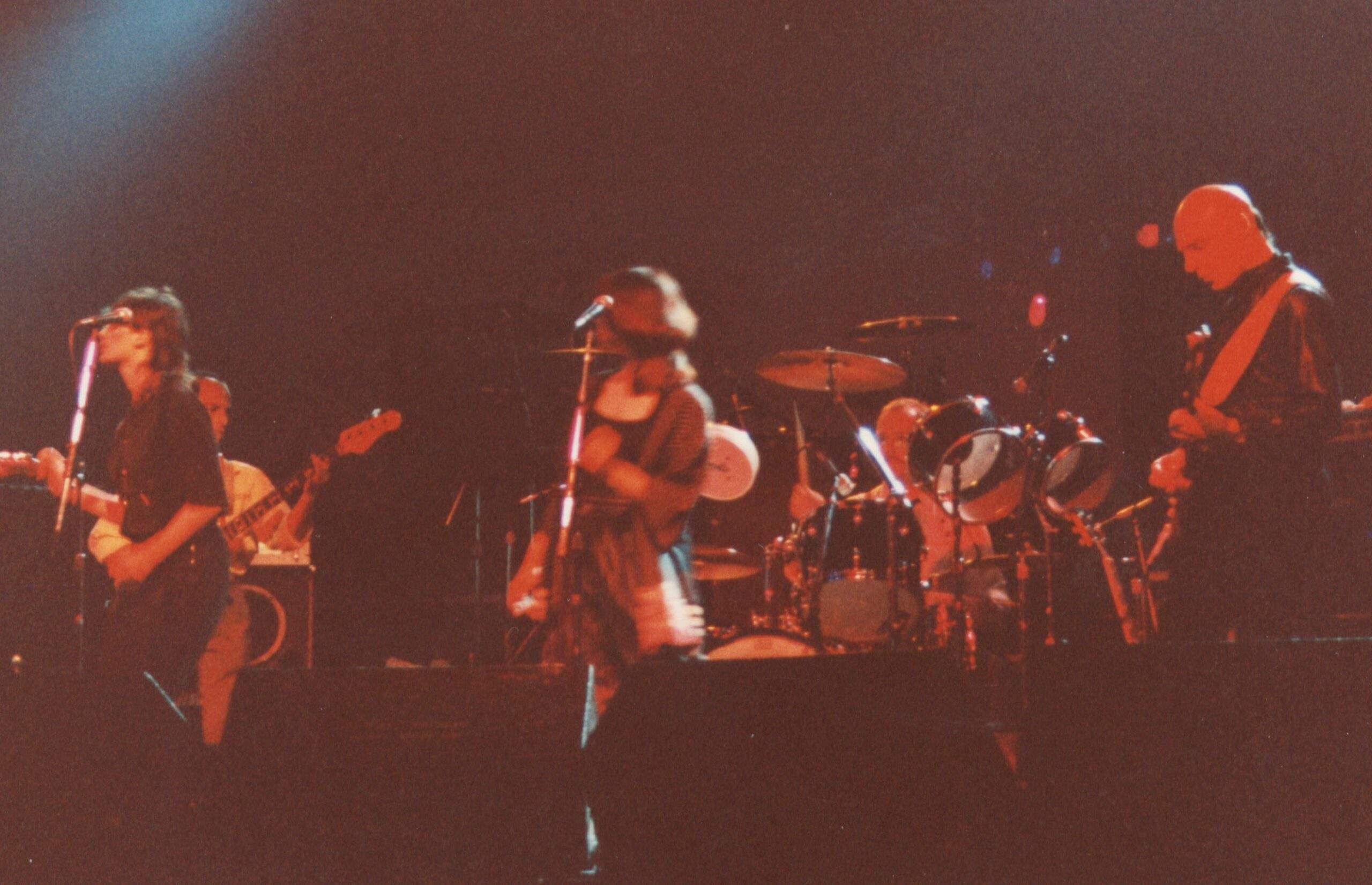
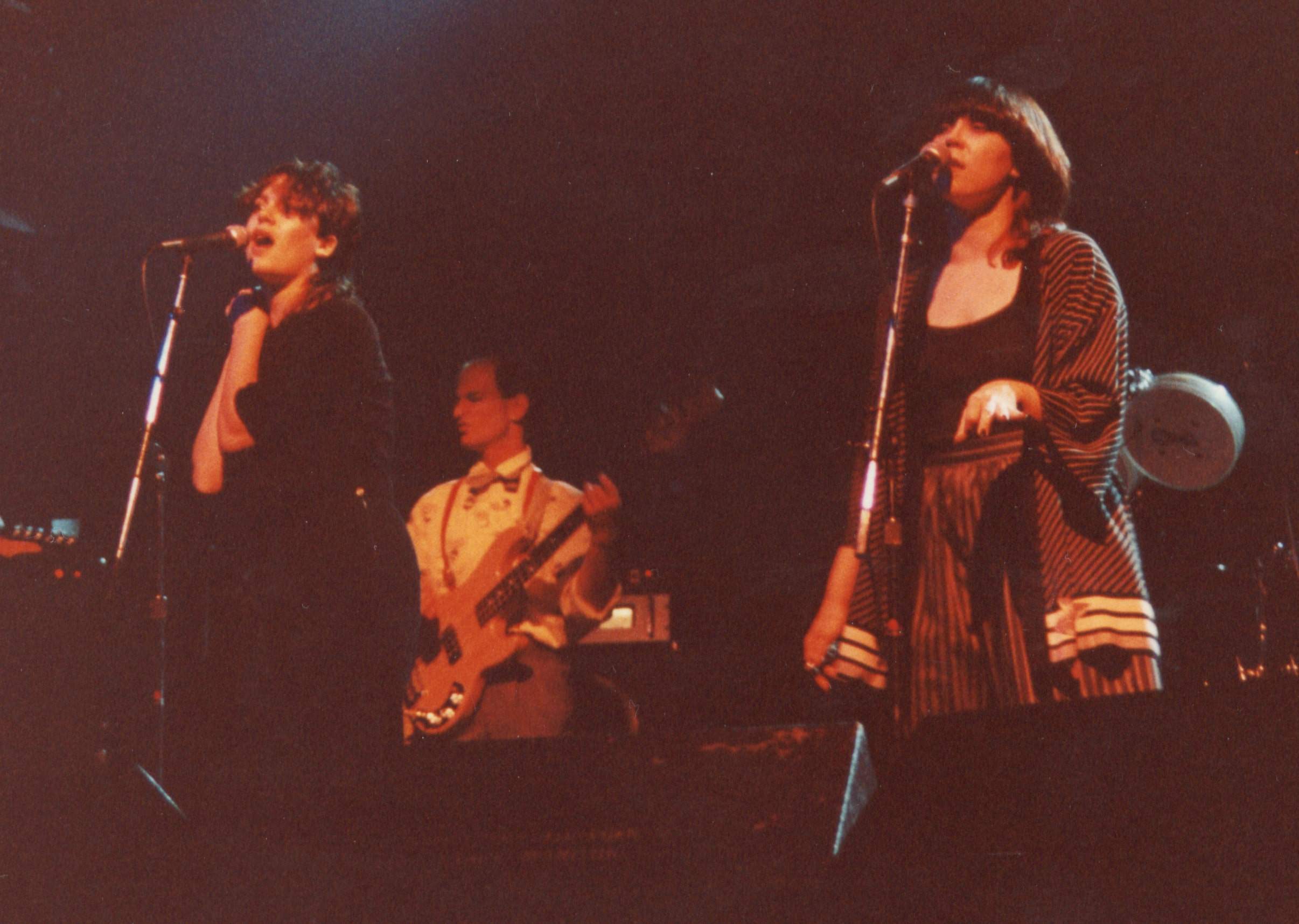
Another time, we were playing at a “chicken shack” in Wichita, KS. We were getting paid in fried chicken and a room for the night (typical touring stuff). I think maybe ten people showed up, mostly women. Since the room was fairly big and there were not enough dancers, four or five of them decided to dance with the chairs.
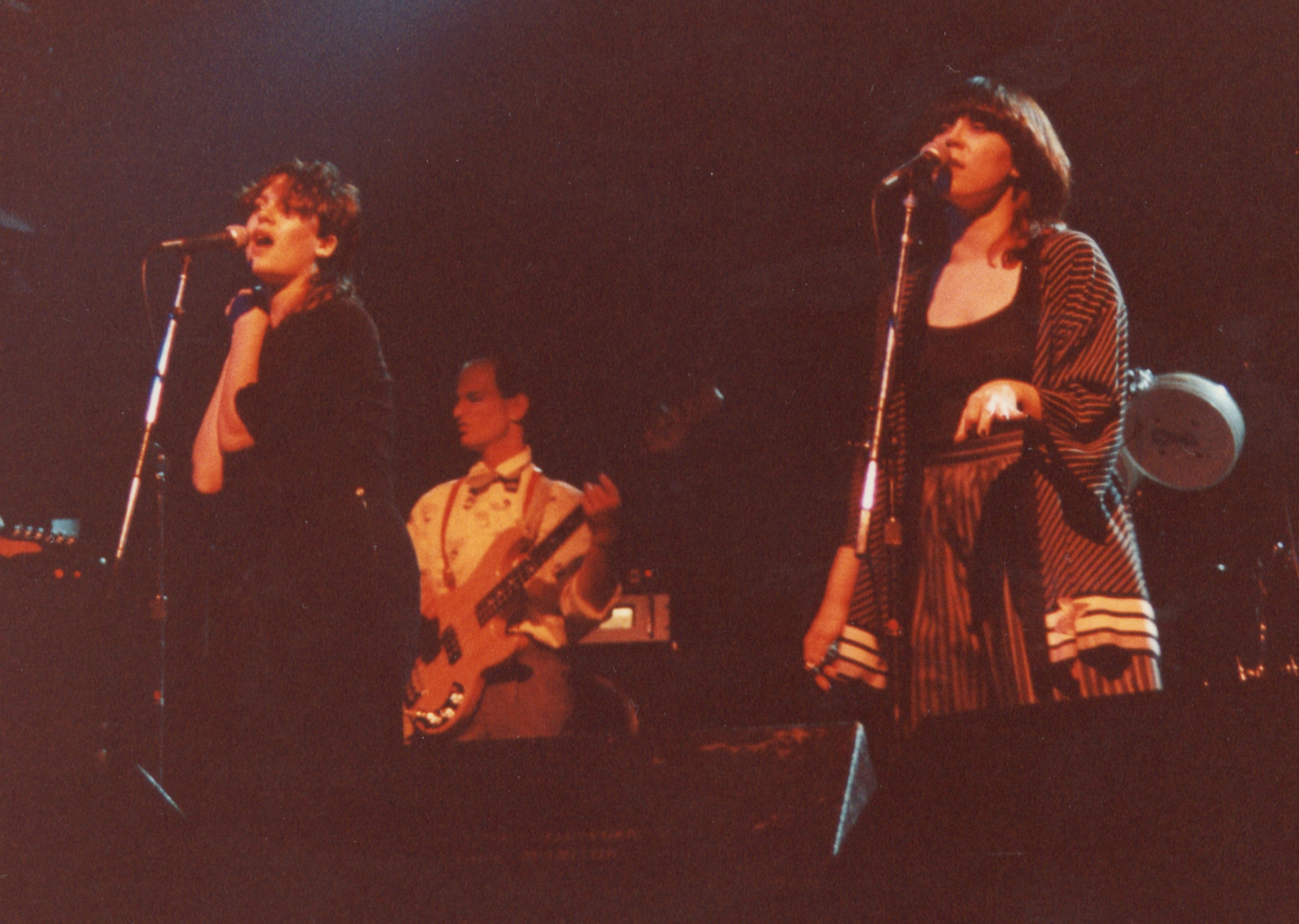
I haven’t found much about Grey Area, did the band record as well?
We did record a couple of sessions. One was recorded on location by Bob Cain (Ambient Sound) using a 16 track. Basic tracks were put down at Greg’s (Norton) house on Lake Pepin, south of the cities, and vocals and overdubs were done at my place. The other sessions were at Pachyderm Studios in Cannon Falls, MN. They were intended as demos for representation and shopping to record companies. Greg said he had a video of our first gig, at 7th Street Entry.

Grey Area toured more than Fine Art; one of those crazy road stories came when Grey Area were to be playing in Lansing, Michigan. We were a little early and as we were driving in, we ended up following a fire truck. Just as we were wondering if the club was burning down, the truck pulled into the club parking lot and the firemen jumped out and ran into the club. It turned out that some rubber belts used in the cooler motors had stuck and were belching black smoke. The club opened that night as usual and I should say we were really hot that night…
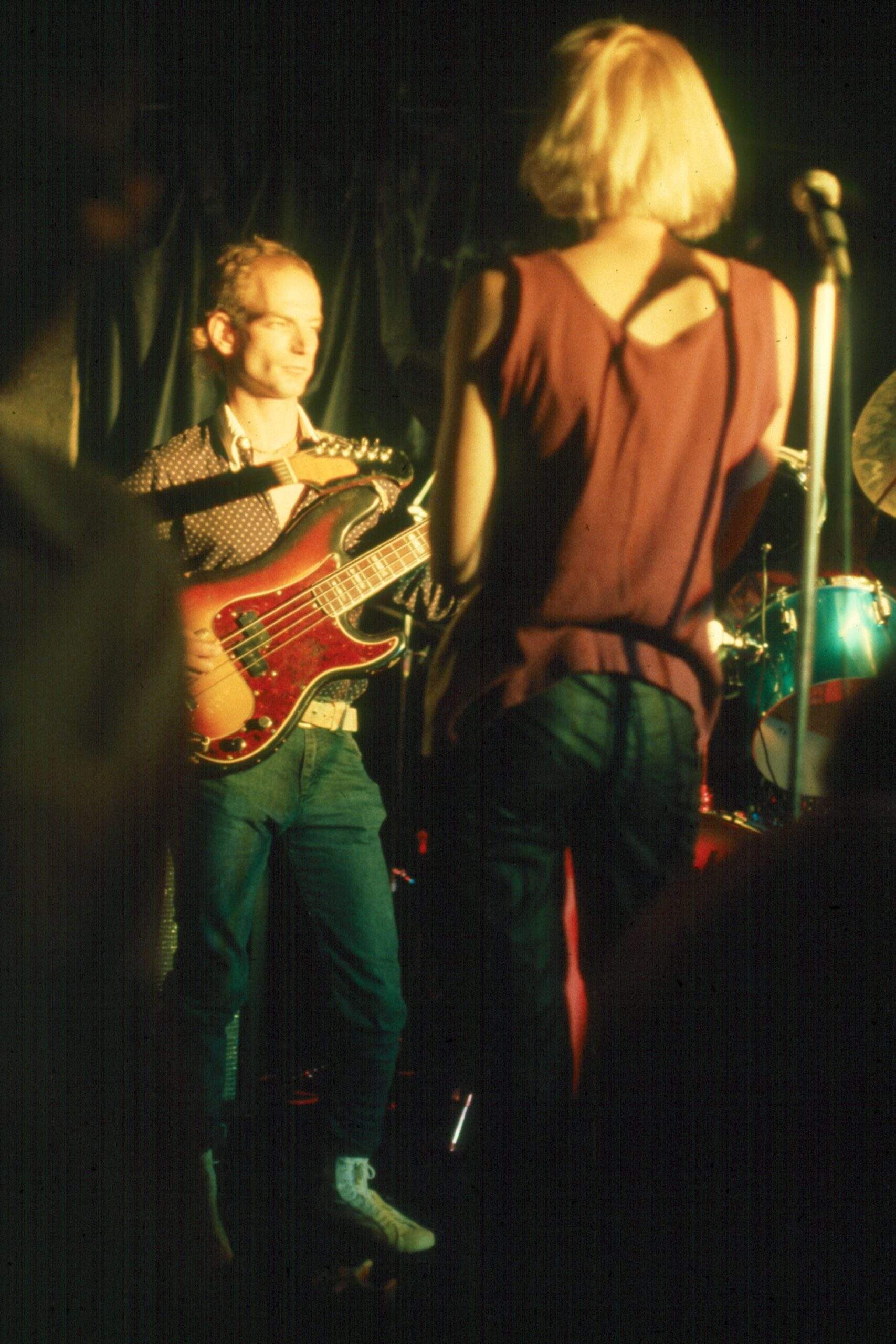
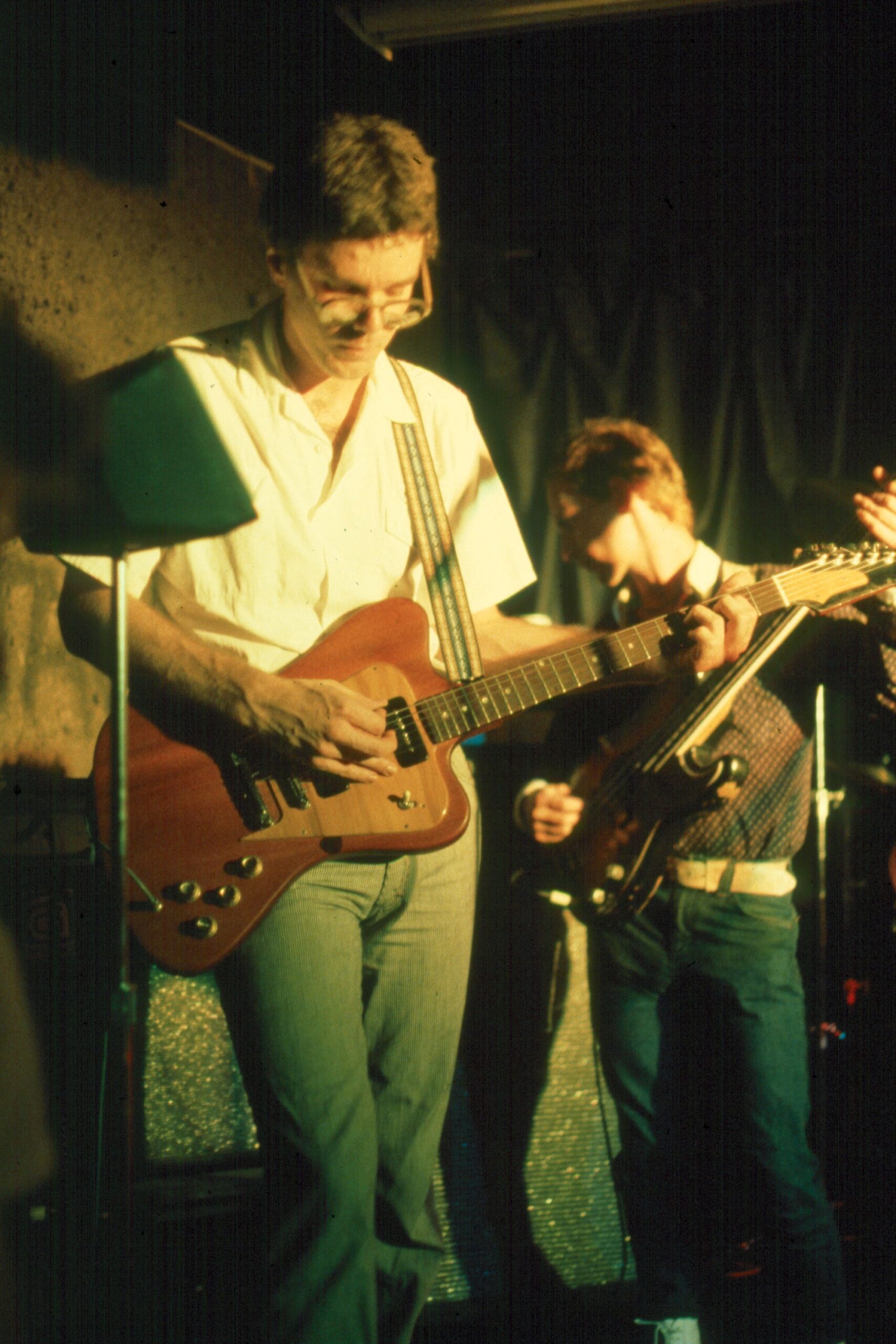
Your name appears also on Language Club – ‘Conversations/Babel’, were you the producer?
Yes. I also played guitar and Carole sang on some songs. I wasn’t intending to play on their album, but Bob (Cain, again) had the tape rolling as I was showing Tom, the guitarist, what he should play for a lead. One take and done. [Laughs]
I also produced Loyal Subjects and of course Hüsker Dü’s first single, as well as a few other local bands.
What about Cut Chemist – ‘Outro (Revisited)’?
That was a story of good intentions gone wrong. CC contacted me asking if he could use the Big Kids in the Alley samples and my first reaction was “Cool!” But Fine Art was always a democracy so I contacted Ken, who talked to Carole and Terri to let them know what was going on. They were OK with the deal, so I got back to CC for a contract. Ken was always the skeptic and he decided to take the contract to a lawyer he knew who pointed out some awkward language in the contract that could have led to us giving up rights and royalties. Eventually, we did get something acceptable although it took a long time to get it and we could have avoided legal fees and some (well deserved to, my thinking) ill will from CC.
The samples do sound good on the track.
What occupied your life later on?
After Grey Area, Carole and I divorced and I eventually remarried. Unfortunately, my new wife (Lisa) did not enjoy the live music scene and I got out of the habit… However, I continued making music in my modest home studio. Some of it was OK. I also became a classical music manager at Title Wave in Saint Paul and later worked at Border’s doing community relations.
Along with writing music I got interested in audio forensics work (fixing old or damaged recordings or tapes that were recorded in bad environments) and was also producing and mastering friends’ recordings. In 2005, Tom, the guitarist from Language Club called me to see if I could help the kids at the middle school where he was teaching write a new school song. Of course I said yes and it was a great experience. The next year I was invited to come in a few times a week to mentor kids who wanted to know how to write and record music using computers. The school had a budget for 2-3 Pro Tools machines as well as for a few inexpensive mics. I think if I had to work for someone else, I would choose that job over most others. It was truly satisfying. Sadly, the budget dried up and so the job went away in 2010 but it was way fun while it lasted.
In 2005 you released ‘Millions’, would you like to discuss it?
Sure. It was actually ready in 2000 and parts of it were already on mp3.com. The artwork was done by a co-worker at Border’s. The release date of 2005 corresponds with the Blue Water Records release. I was introduced to BWR by Chris Wray, with whom I collaborated online to make the Sound Commandos. Chris came to the US from Hartlepool in the UK in 2012 to visit friends and collaborators in Seattle. He came to Saint Paul on his way back to visit, and he played a couple of shows while here. I even played some of the parts from Sound Commandos with him (me, playing live for the first time since 1991). What was very cool was at his very first show he met the woman who would become his wife and he moved here permanently shortly after.
Are there any unreleased material from Fine Art or any other bands?
I have recordings of almost every song Fine Art made. I haven’t actually counted them but it would be about 30-40 or so. As I mentioned earlier, a lot of people moved through Fine Art and each time there was a personnel change we wrote new songs, taking advantage of their strengths. That sort of thing tends to add up over time.
And of course, the Grey Area stuff remains unreleased. I also have some other recordings from bands of the time. Not many, though.
This little nugget ‘Promises and Good Intentions’ by Carole (lyrics) and myself (music) is from the final version of Fine Art, recorded at First Avenue nightclub in the main room (Danceteria). The “Cameo” concept was to have a band play one or two songs in the middle of the evening to showcase an upcoming performance or simply to introduce the act to people who would not necessarily go to see a live act. 1st Ave had a giant movie screen in front of their stage and a band would start while the DJ was fading out the dance music and the screen was raised. This is why there’s darkness for a moment after the band starts. A cameo was a fun, but often nerve-wracking thing to do since the dance crowd were not tuned in to anything live. We used to take bets on how quickly we could clear the dance floor. This cameo signaled our return after a few months of auditioning and teaching the new members our songs, so there was a bit of tension.
By this time, Jenni Holt had left the band and we continued with Carole (aka Kay Maxwell) as the lead singer. We had also changed the other personnel, with Dan Picasso (drums), Mike Johnson (keys) Dave Wynn (bass), and an old friend from many years before who had played for Ike Turner and preferred to be called Sly on percussion.
Tell us about your collaboration with The Dignity Of Labour and Hüsker Dü?
The Hüsker Dü recordings came about through some happy coincidences. Fine Art was doing really well, and I had just left Pickwick to start Twin Cities Imports with John Carnahan, the owner of Northern Lights record/head shop. He had an open basement where I could set up the wholesale record business, and it happened to be where Hüsker Dü rehearsed. Of course we knew each other from playing the same places. So, I had a four track tape machine and there would be some time before the basement would be cleared enough to bring in shelving and desks. I ended up recording at least two sessions (plus overdubs), which did quite well as bootlegs, apparently. When it came time to go into Blackberry Way to record their planned EP, I was asked to produce it. Although we recorded several songs, ‘Statues’ turned out to be a very long cut and we didn’t want to edit it down. Also, they had a tape recorded by Terry Katz (from a mixing board at a gig) so ‘Statues’ became one side and ‘Amusement’ became the other side of a 7” single. I think some of those other recordings from that session ended up being album tracks later.
The Dignity of Labour was an entirely different situation. Kirk (TDOL) had written an entire album and needed a producer. We sent tracks back and forth and got most of them ready for recording vocals. Kirk decided to come from Colorado to visit me in Saint Paul to get the finishing touches on the tracks and to record the vocals at Ambient Sound. I was really not set up to record (in my apartment) and while I liked what he was doing I realized there was no room for production — he wanted the tracks to sound exactly as he had them. It was a pretty stressful time and I don’t think either he or I were satisfied with the results. Not that it was bad by any means, but I felt it just missed its potential.
What else currently occupies your life?
I still work on music, although mostly for myself these days. I do like online collaborations like the Sound Commandos projects. In fact, Chris introduced me to one of the singers on my album, ‘The Great Expedition,’ Latha Sambamurti who lives in Seattle. The other vocalist, Holly Nelson, lives in Portland, OR. I haven’t met either Latha or Holly in real life. Holly and I collaborated on the song, ‘Be The One’.
Let’s end this interview with some of your favourite albums. Have you found something new lately you would like to recommend to our readers?
Recently I mostly rely on recommendations from friends, and they tend to be either female fronted bands of all kinds or “out there” experimenters. In the former category there’s Agnes Obel, Tired Girl, Lulu Rouge, Little Dragon. Of the latter, Minneapolis’s KPT is producing great stuff. Also, Side-Line Magazine on Bandcamp released a compilation of Ukrainian music “Electronic Resistance” that was quite good. Several of the Ukrainian bloggers have bands. They tend to be heavy speed metal. Or they did when the war started.
Apart from that my one guilty pleasure is a mostly female group from Siberia (sadly, still in Russia) called Otyken. They mix Siberian folk music and instruments with western rock and dance beats.
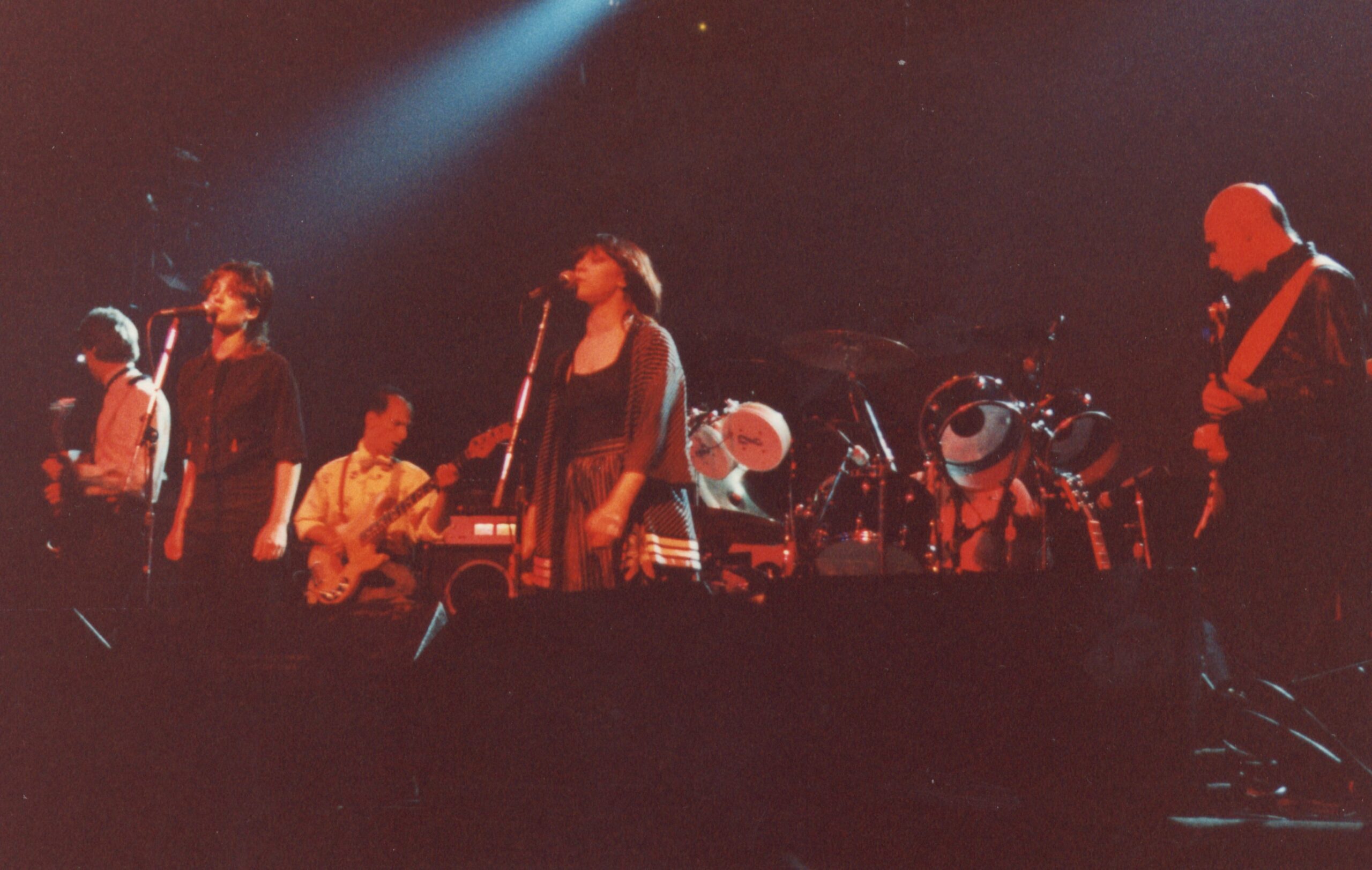
Thank you. Last word is yours.
I appreciate the interesting questions, thanks for asking. It’s much appreciated.
Klemen Breznikar
Headline photo: Fine Art at Duffy’s in 1980 | All photos by Renee Robbins
Colin Mansfield Facebook / Twitter / Bandcamp

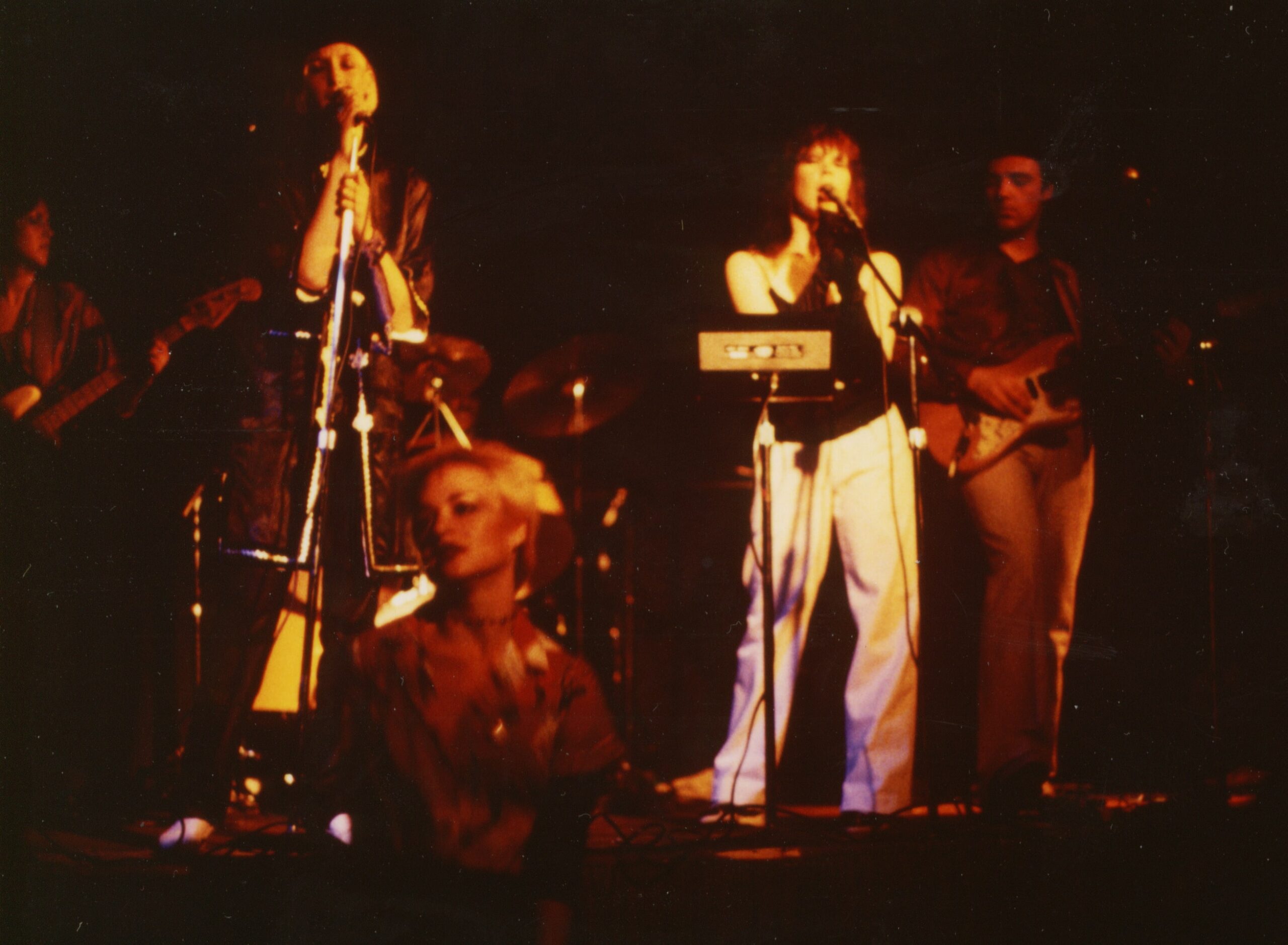
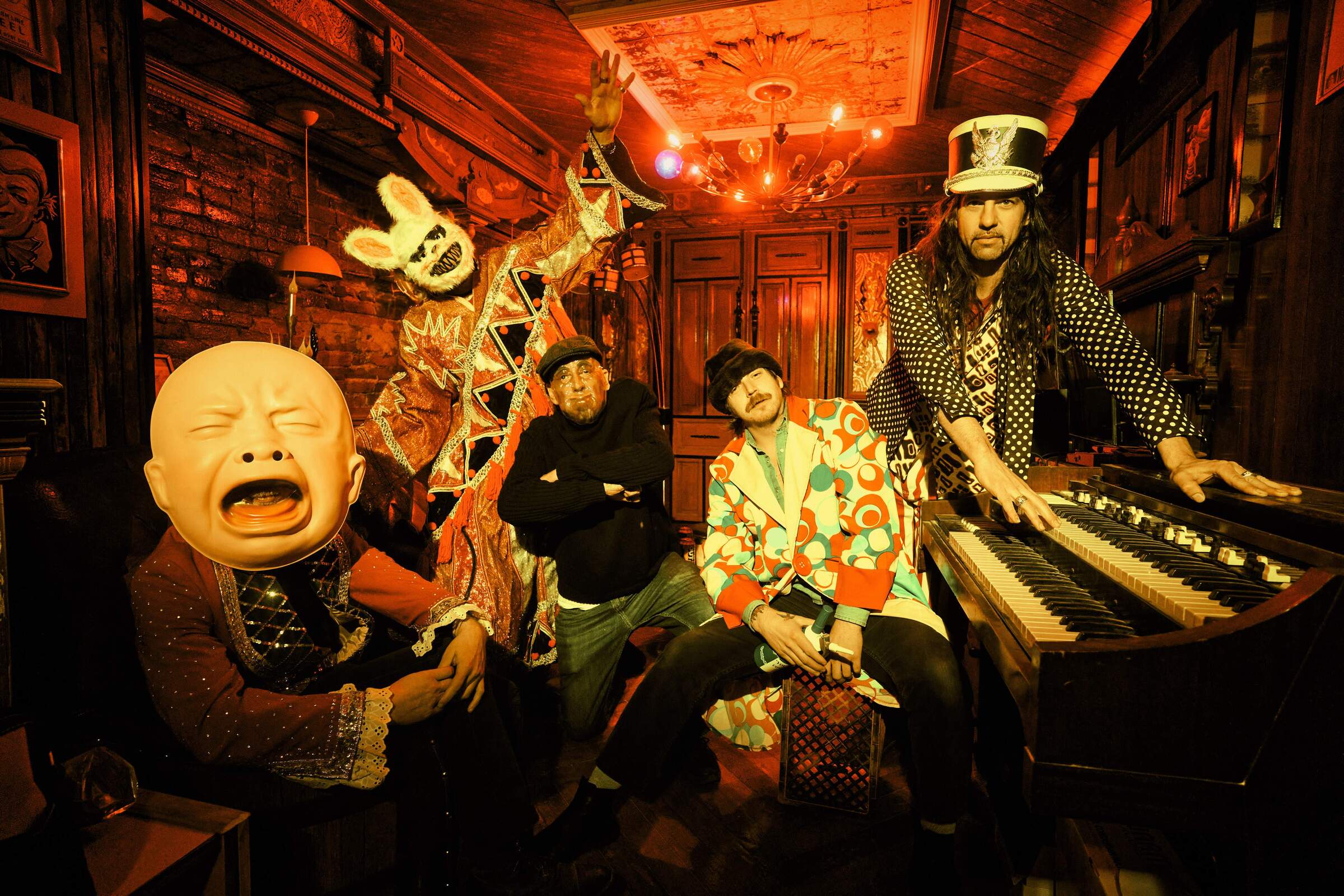
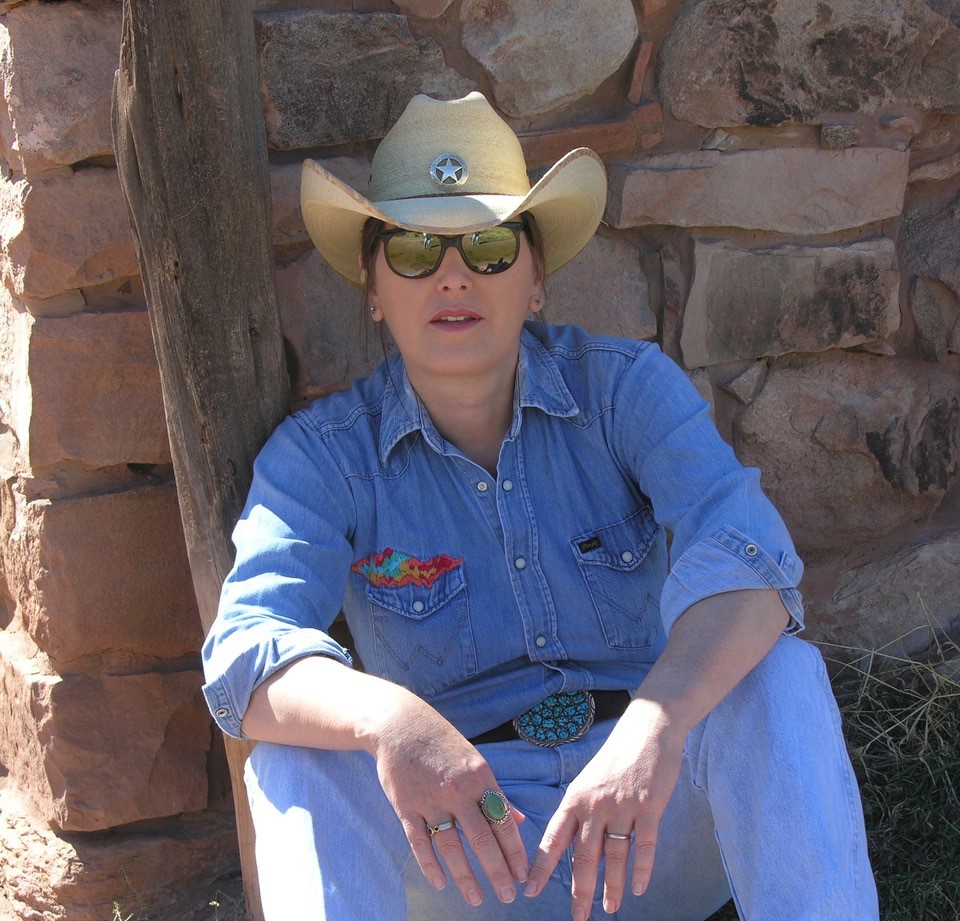
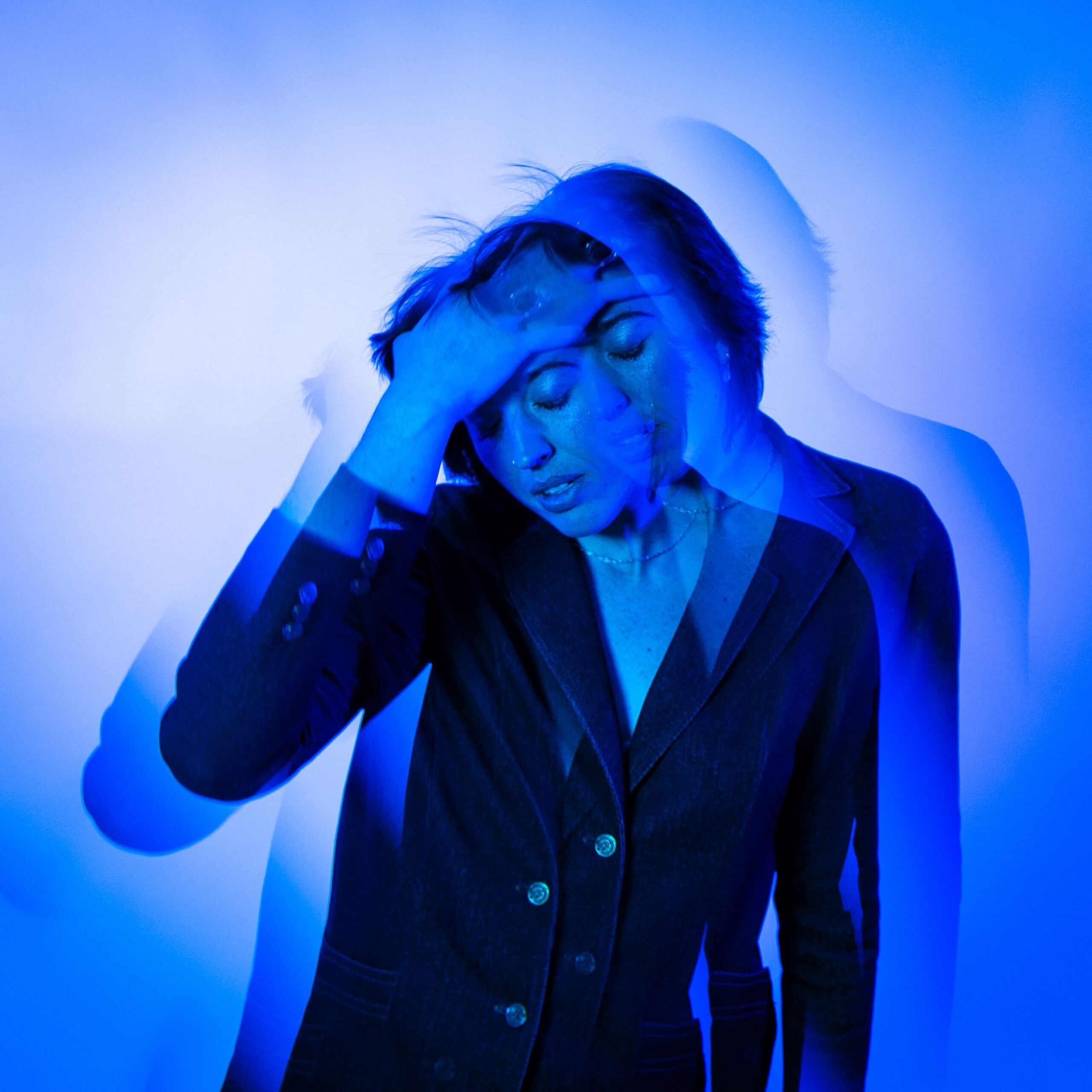
Fantastic Klemen that you bring an interview with FINE ART. One of my favourite bands. So good (!!!) and so unknown, just a scandal. Thanks to your interview i am now informed about the band. You don’t get any information about the band. I myself have 45 min. unreleased studio tracks and a 50 min. sbd live recording both on cassettes. The unreleased studio tracks are almost even better than the lp.
I’ M SO HAPPY FOR FINE ART. I hope that the band will be better known now !
Oh, thank you so much for the kind words. Yes, I’m very happy for this interview as well. I wonder what unreleased material do you have. Maybe Colin will known more about it.
And for the first time i see photos of the band.
I bought the lp around 1980. A friend in Germany wanted to have the unreleased tracks recording by a label, hope with the band advice, i don’t know anymore but unfortunately not interested.
Colin is welcome to me !!!
Very cool to see this article! It looks great and the video is well placed. Also it is wonderful to see the comments from Josef Kloiber. I would definitely be interested in learning what the unreleased material is. I would be (pleasantly) surprised if there are recordings I don’t have. I suspect what you have are recordings made with Paul Stark of Twin/Tone that were supposedly intended for release, although Paul never got around to it somehow. He was busy showcasing The Replacements at the time, and the studio dates made it difficult to book live dates. (He was also recording another great band, Safety Last. The net effect was that neither band could play when the WB reps came to see the ‘Mats.)
A few live recordings come to mind. But I have a feeling one may be from an outdoor show at Loring Park in Minneapolis. If there’s a live recording of me singing Freezing Down though, that would be from the Longhorn bar.
Colin, Very interesting article! It brought back a lot of memories – the local music, the music industry Pickwick and Musicland group. There is one recording I have where you played a very spacey lead on one of a song I recorded. I had a TEAC 4 track reel to reel and we recorded your lead on a song called “Are you the Messengers”. I still have it and have it saved onto a CD. I still get chills listening to your guitar on that one. I believe you had a little pig nose amplifier you played through. Again, a fun article to read. – Frank Gray
I remember Colin from the old days, and just want to say that he is a great, down-to-earth guy, and that Fine Art was a very good band!
What about Animalistic Cha Cha live at the Entry, early eighties ?
Great Show !! Any Chance these will be released on a CD Compilation ?? !!
Thank you Mark!
I have a version from the Entry recorded 10/25/80. I’ll see what I can do. 😉
Hi Frank! Yes, lots of memories from that time. Pickwick wasn’t the best memory, but here’s a bit of Pickwick trivia for you. Ken visited the store while I was running Aura Sound, ’round the corner from Discount Records in Dinkytown. A little later I got the offer to be Pickwick’s import buyer, which was good since they were closing the store. So I went in for the interview, was offered and took the job. Coming home by bus, I found an empty seat and realized I was sitting next to Ken, hidden behind a newspaper. We said hi, then he asked why was up and I told him I just got a great new job. He said, “Yes, I know. I just got fired from it.” He called me a few weeks later to see if I wanted to play guitar and maybe get a band together…